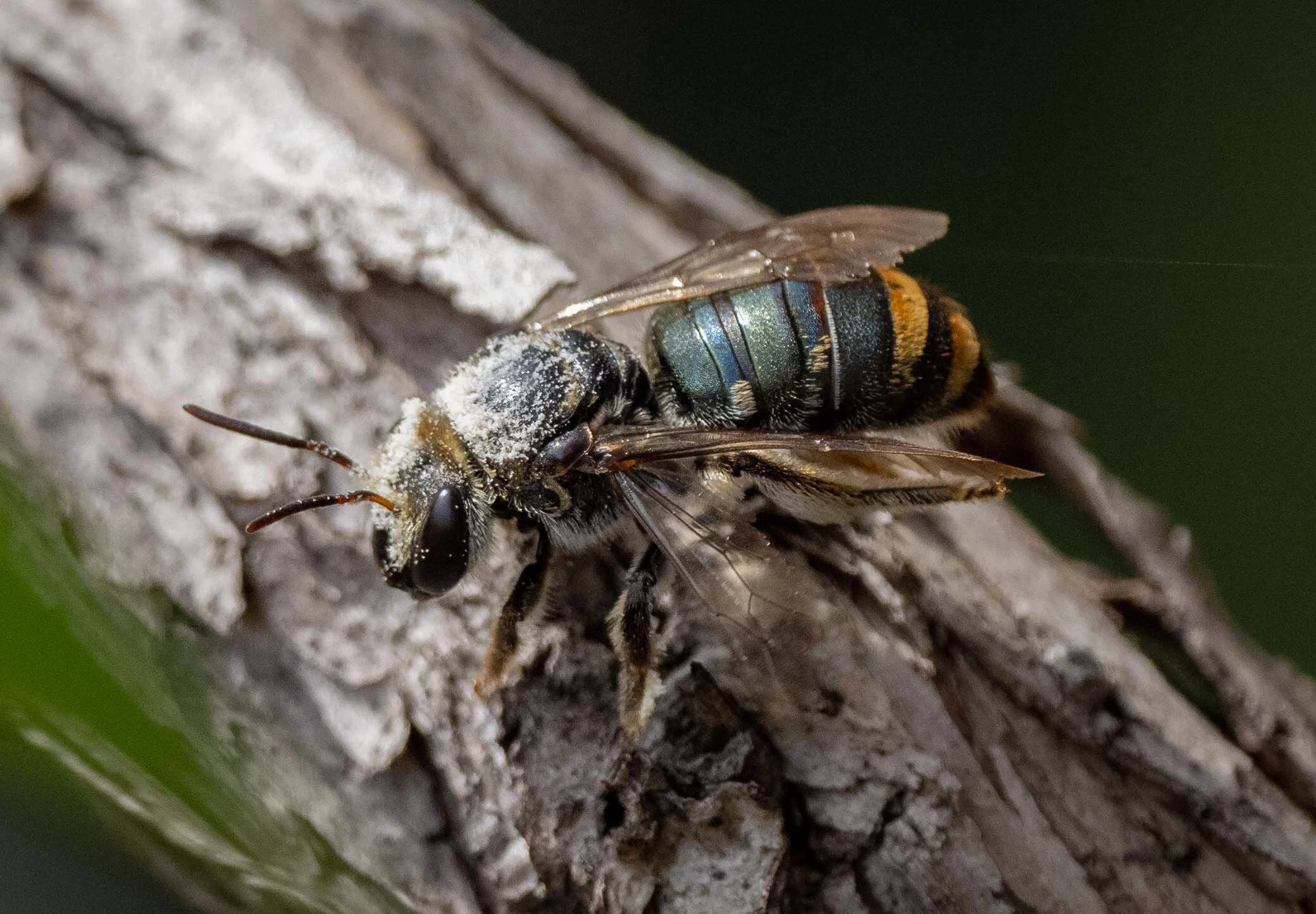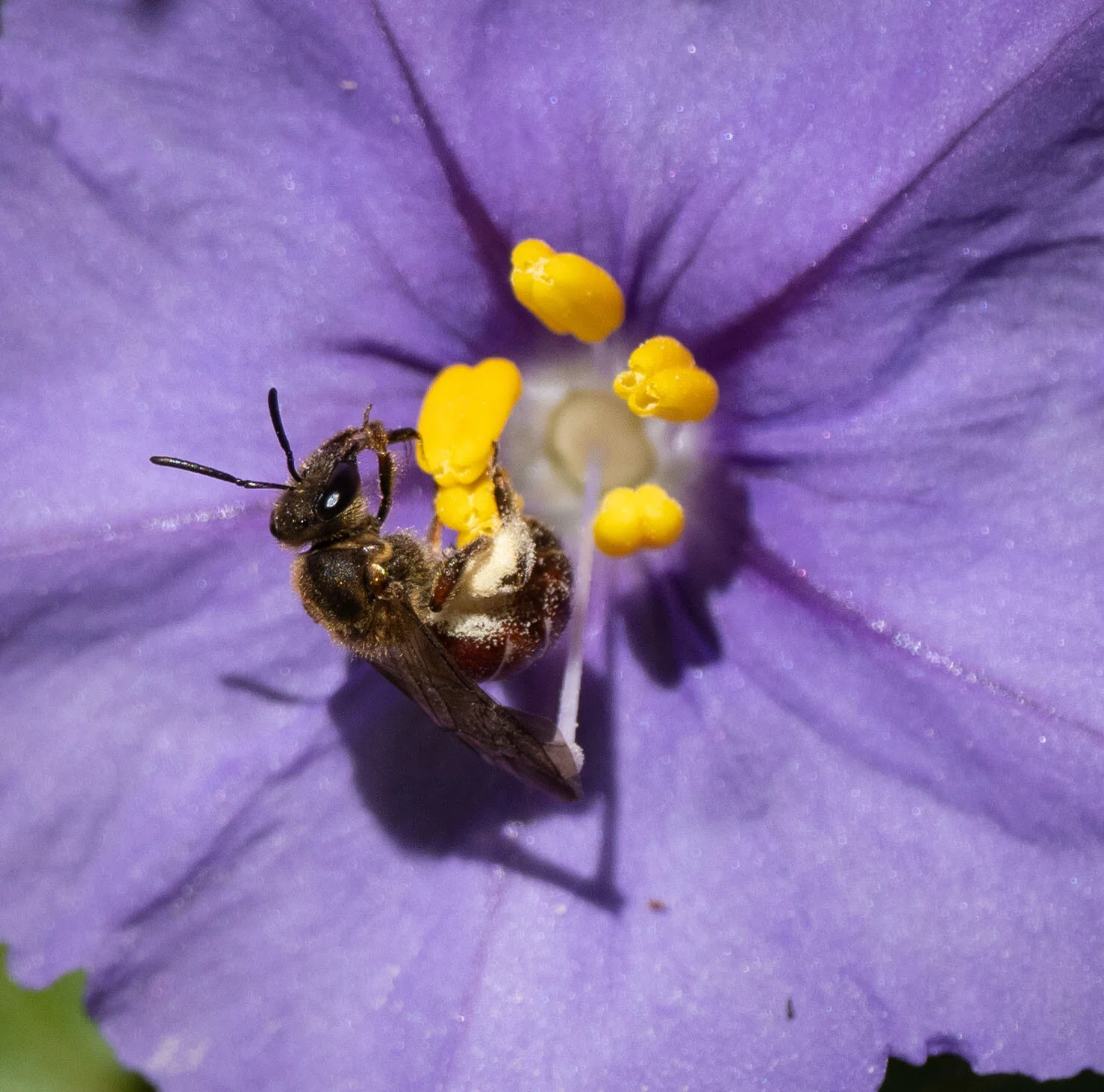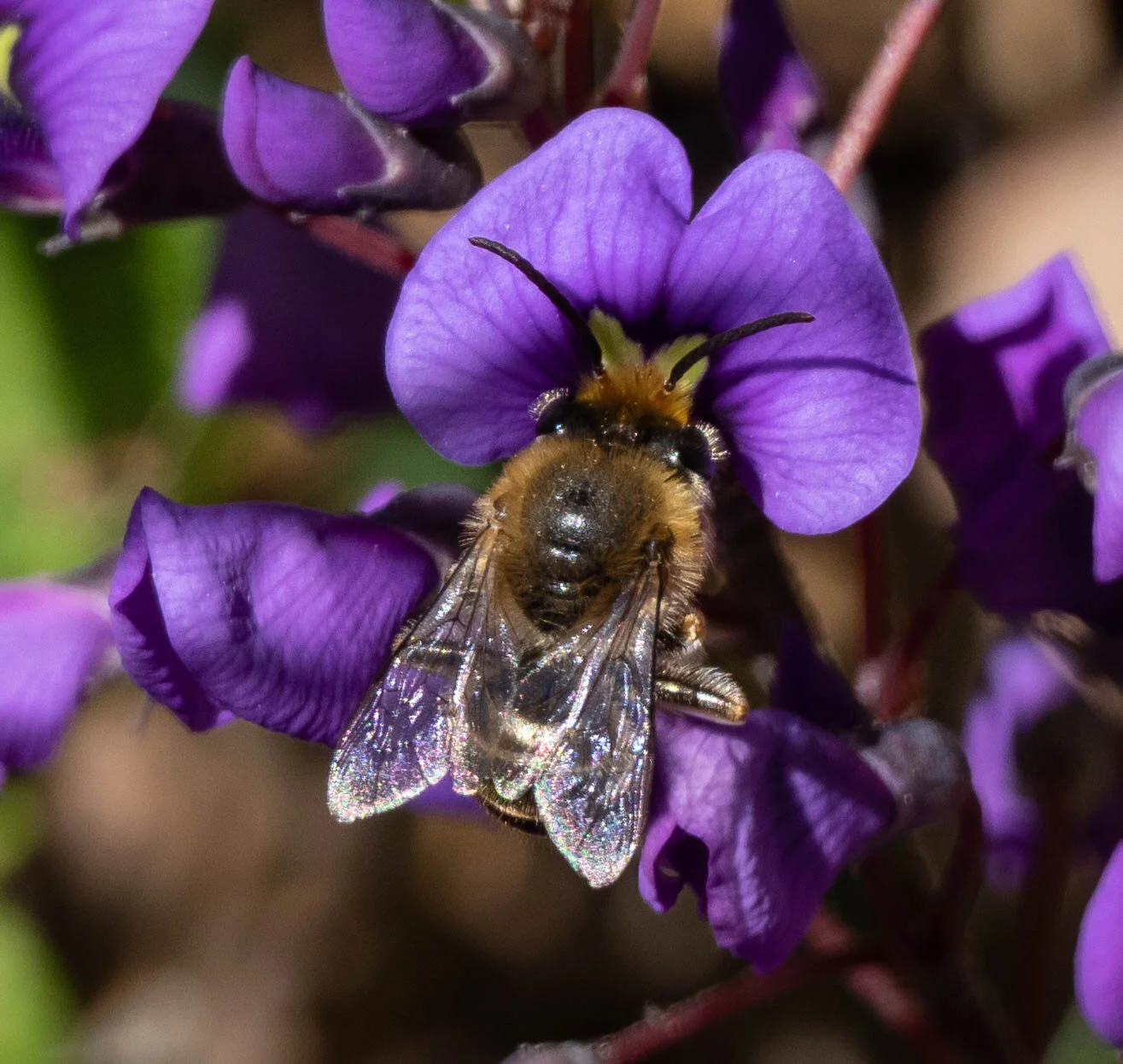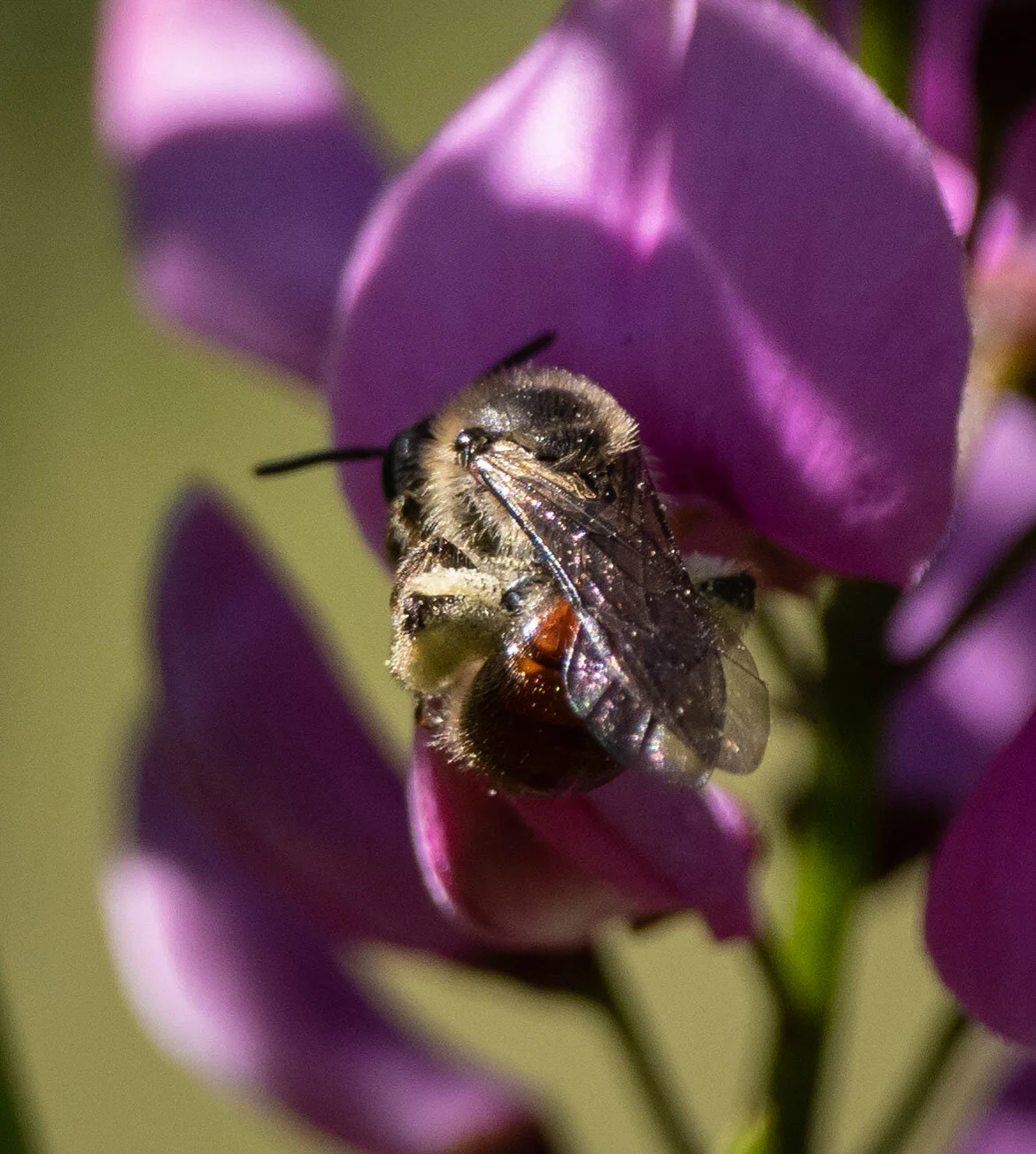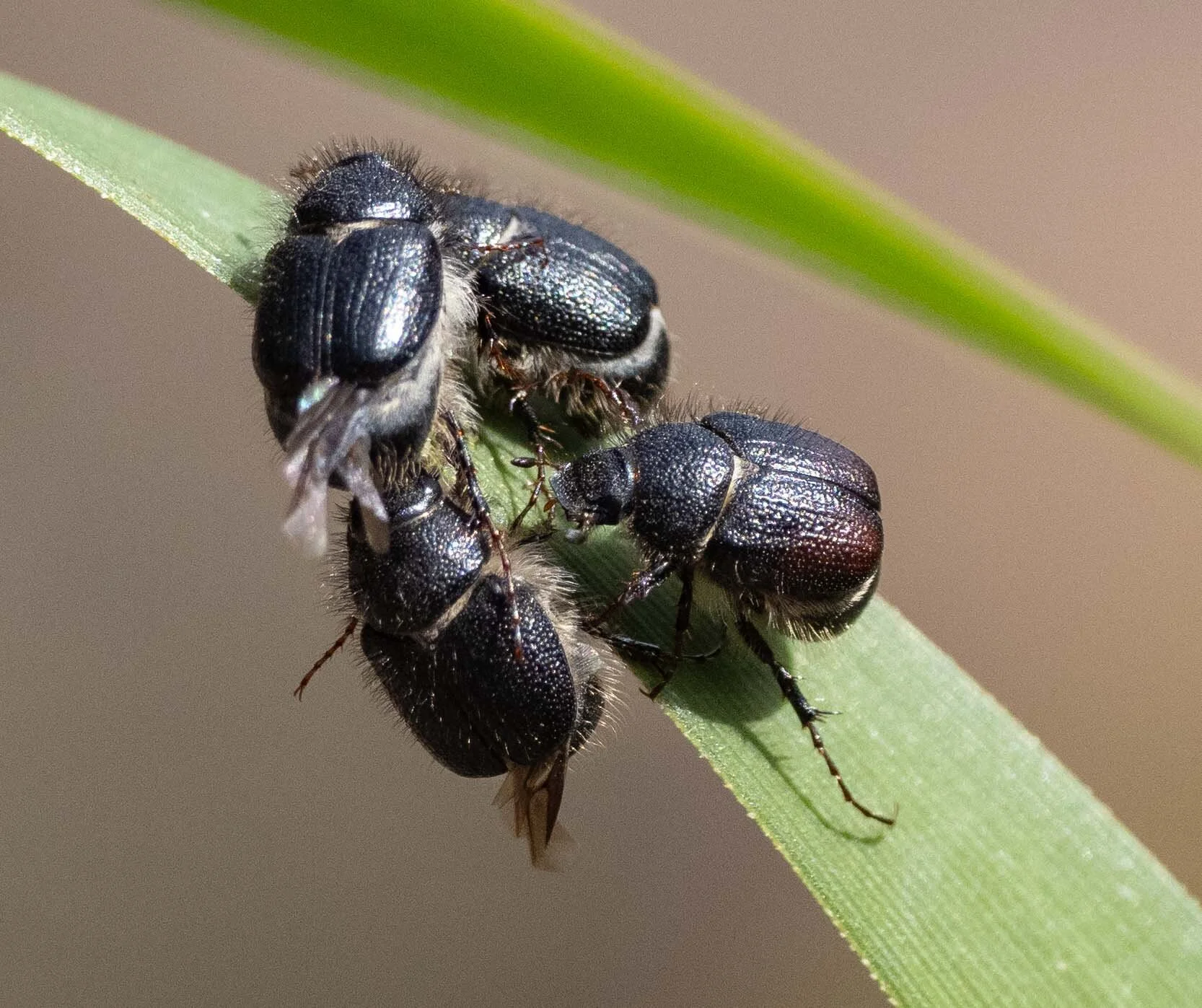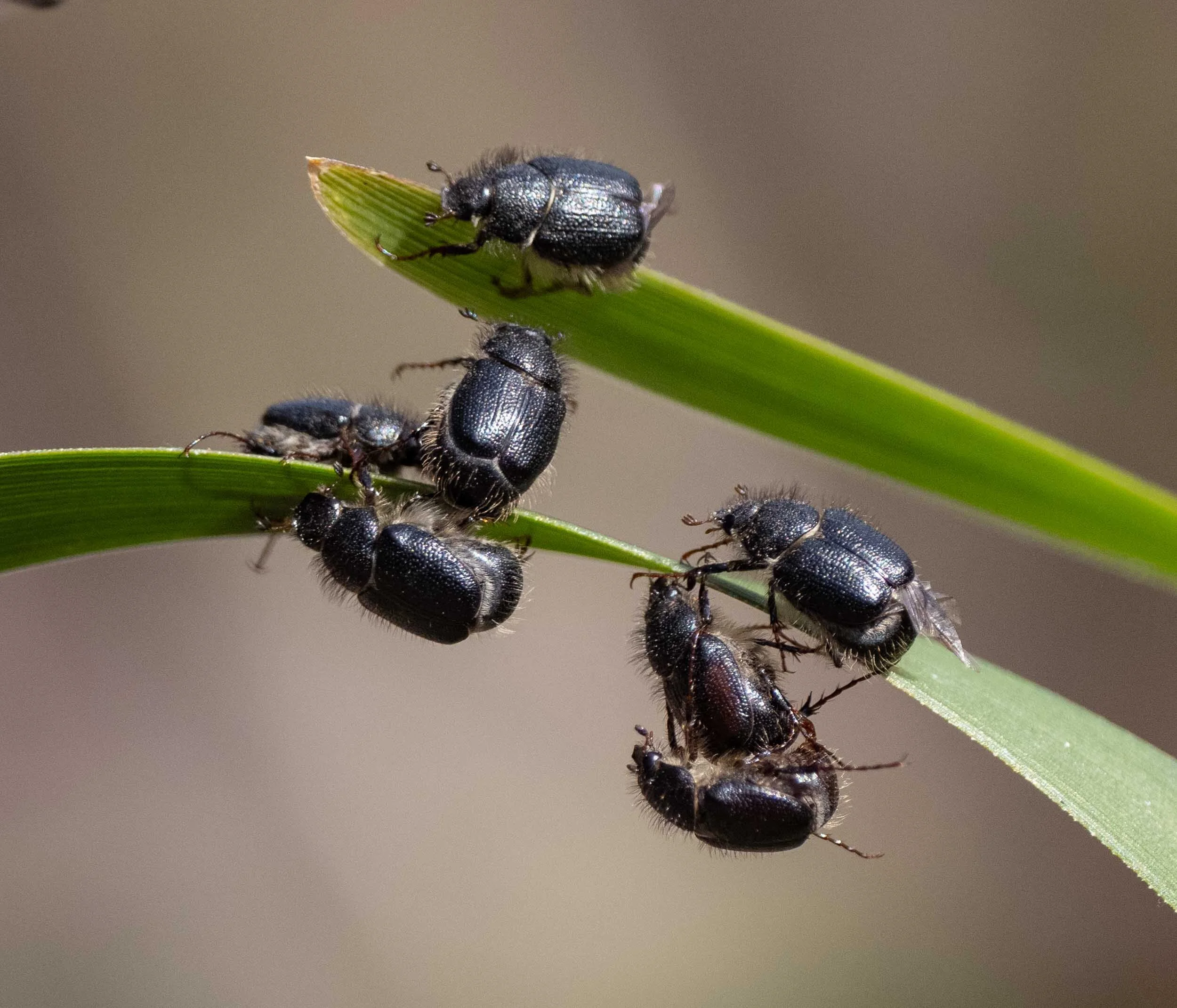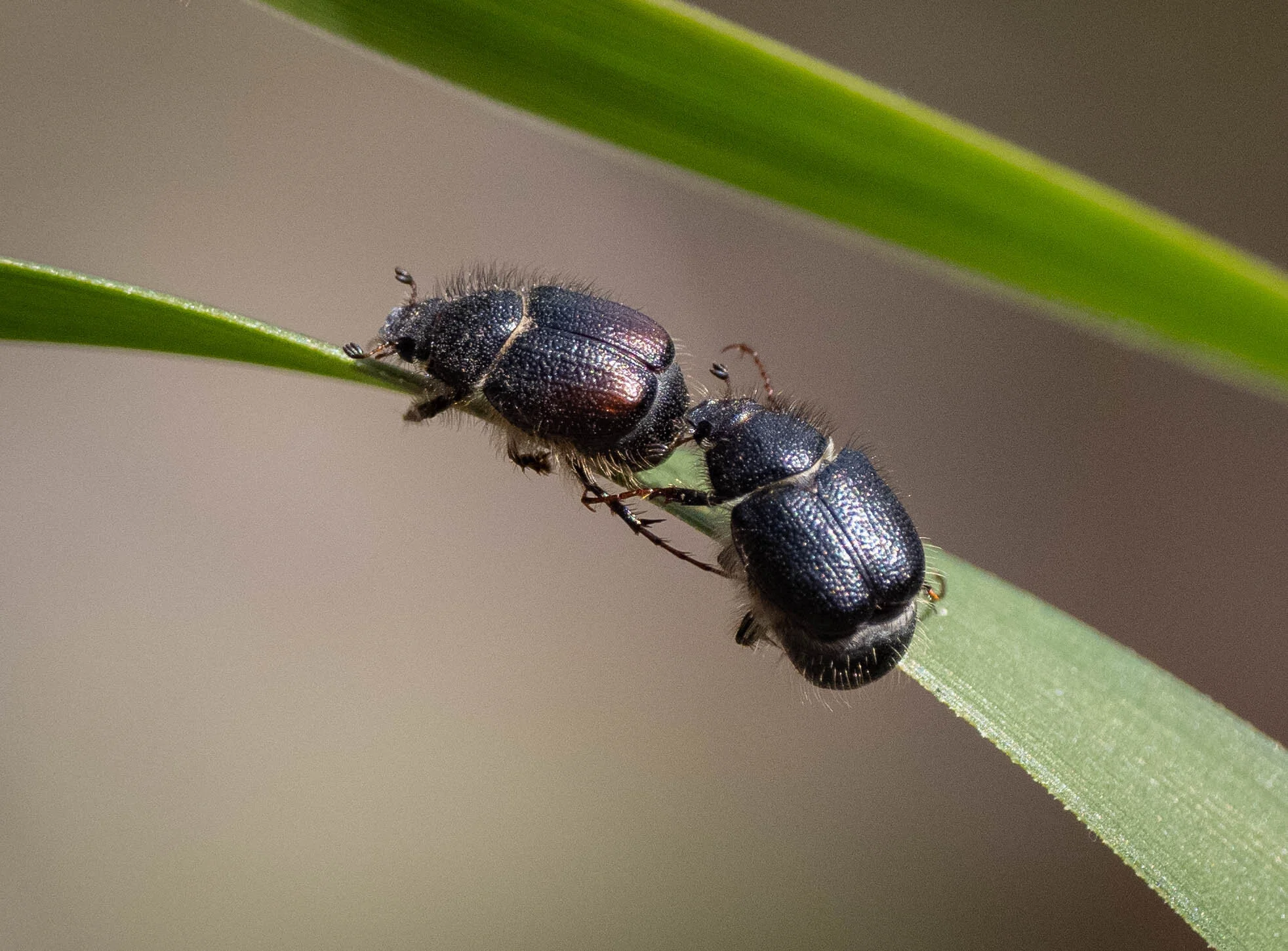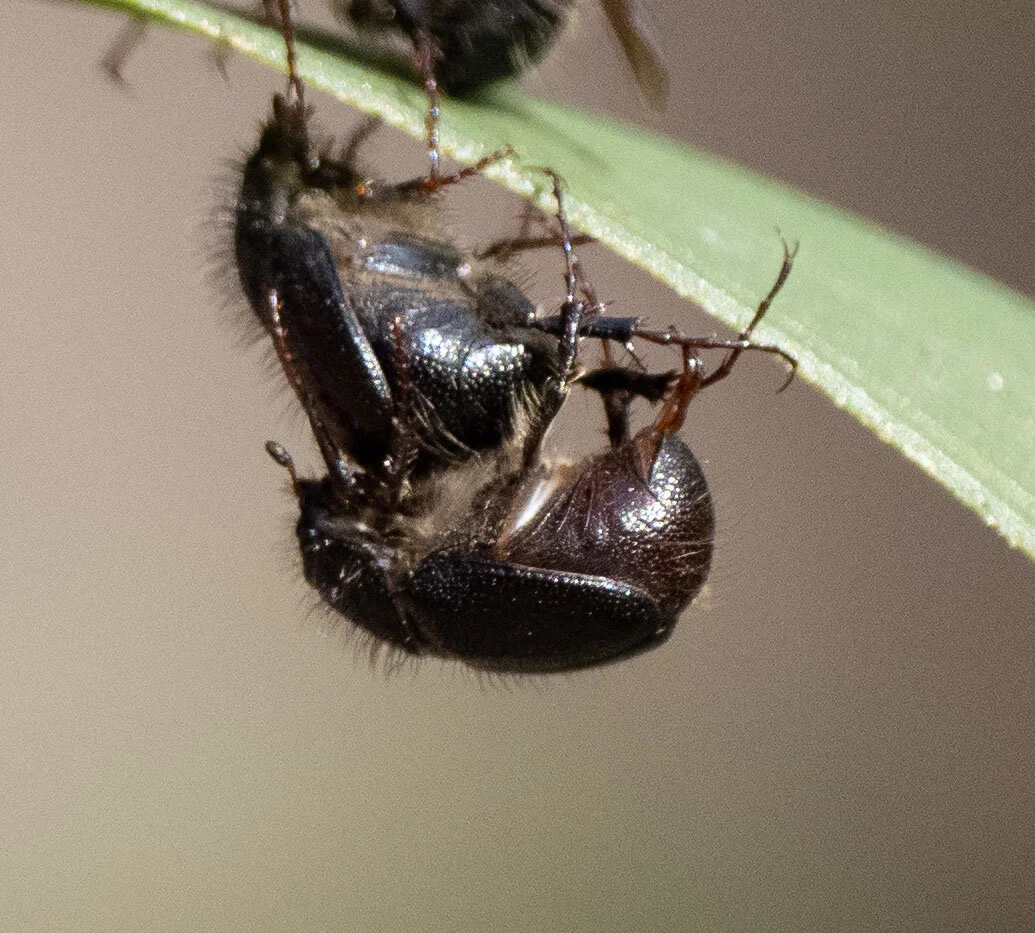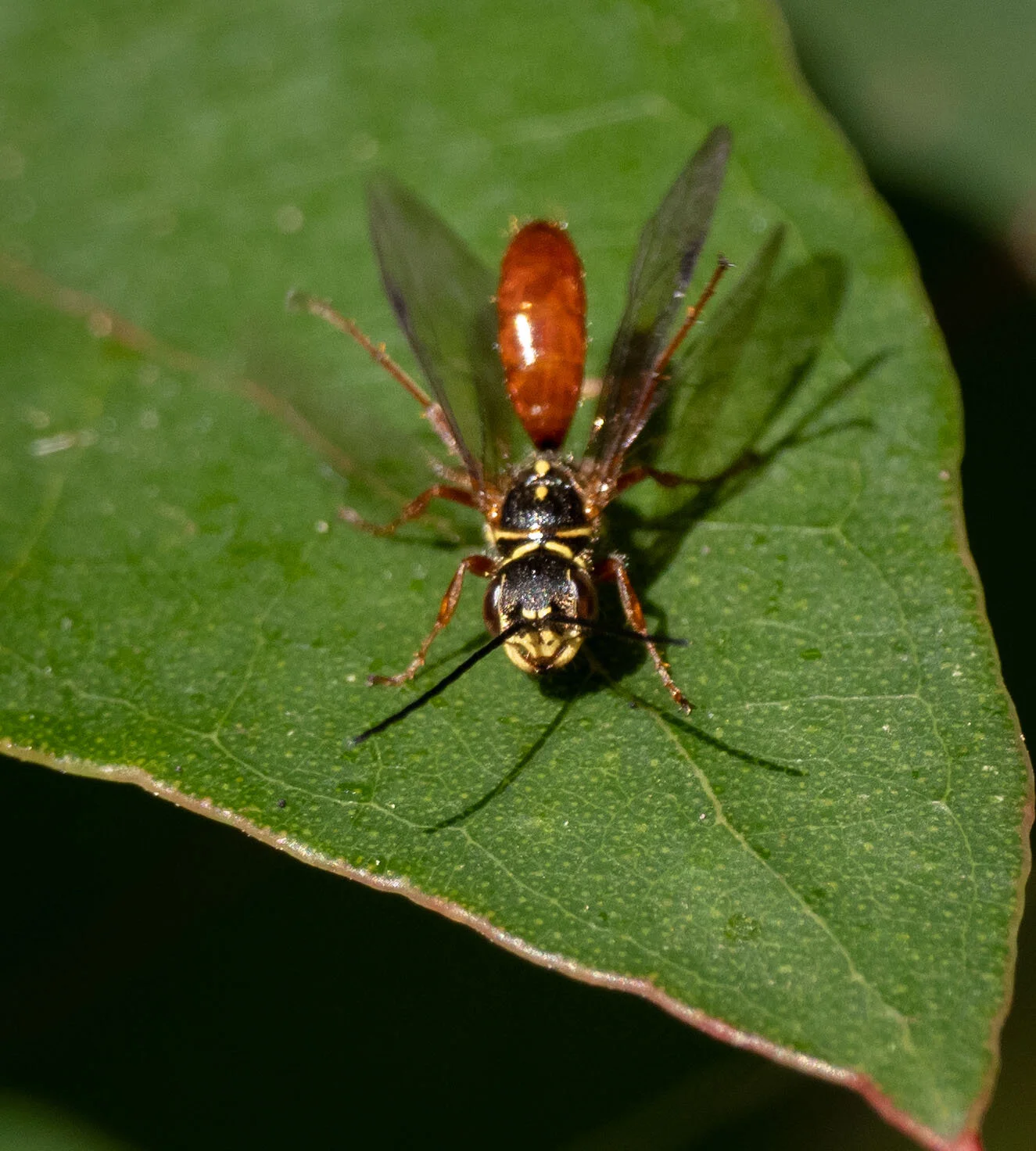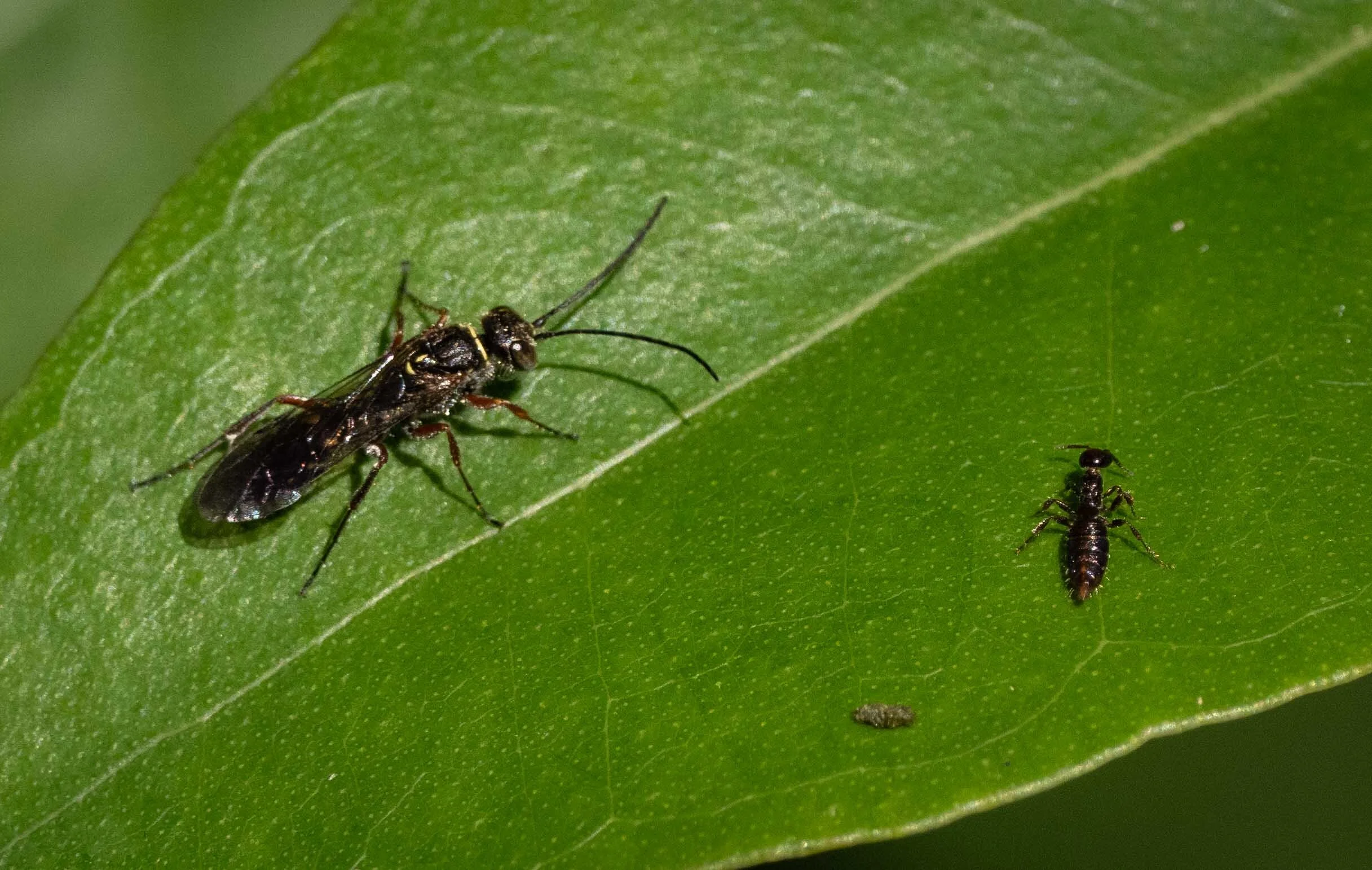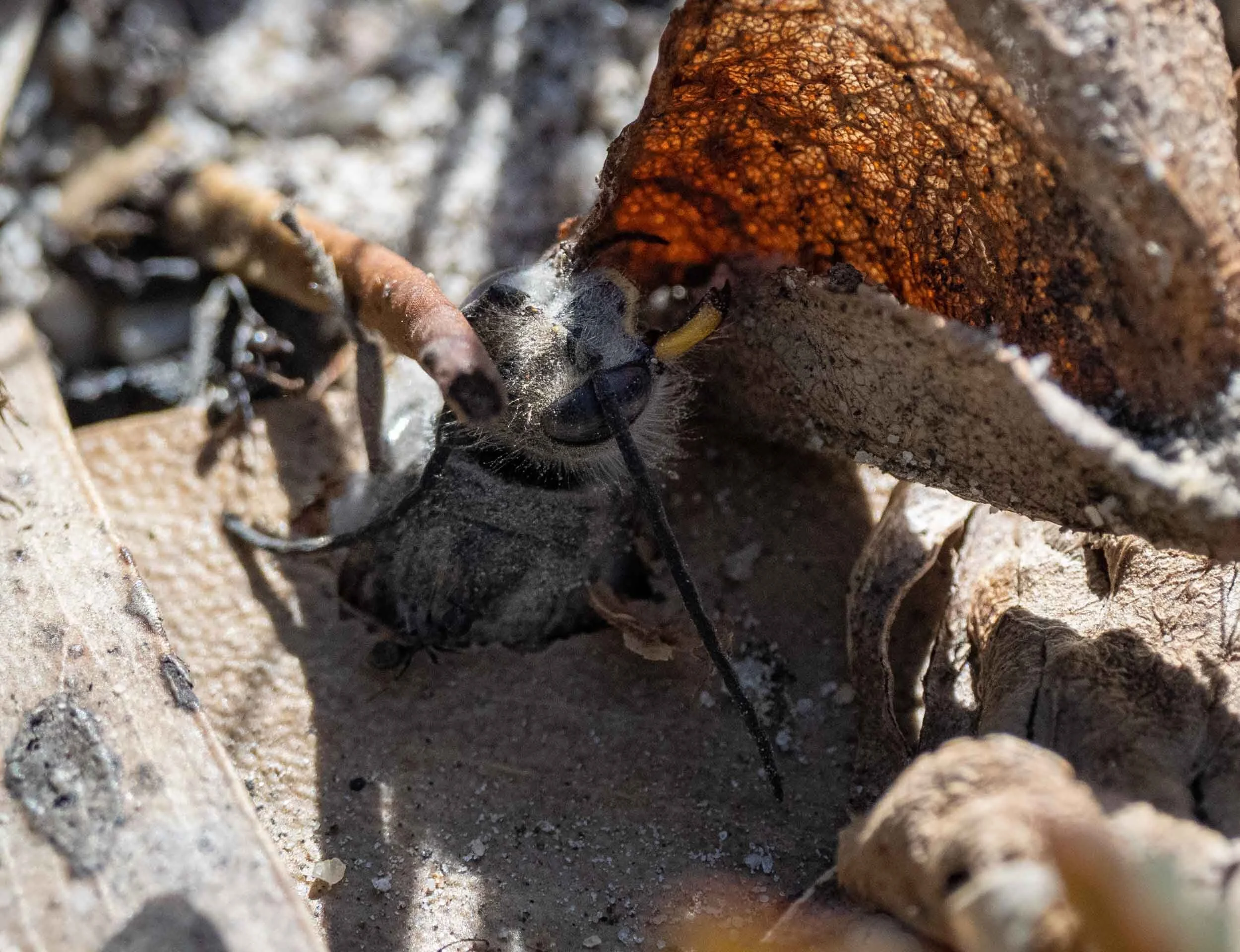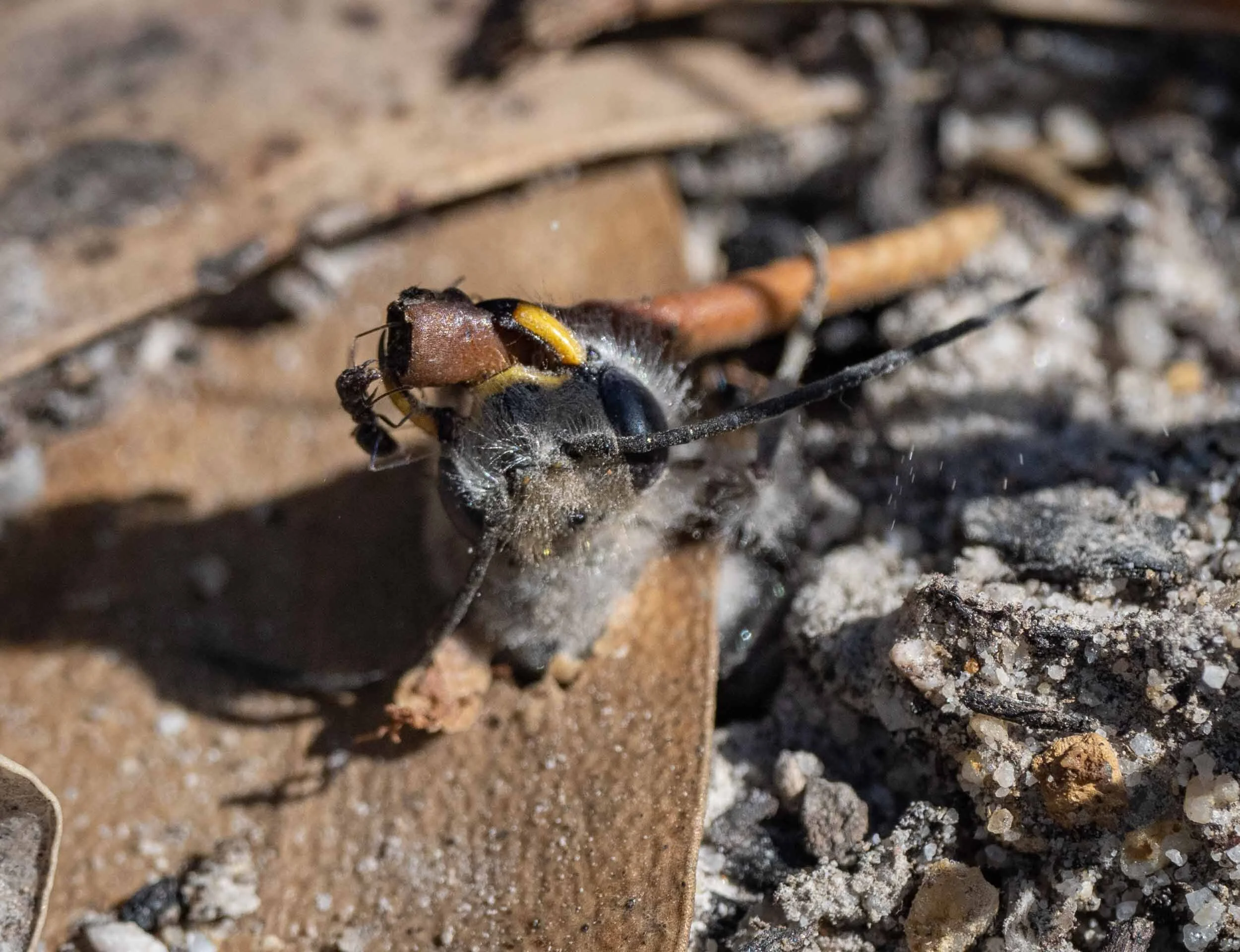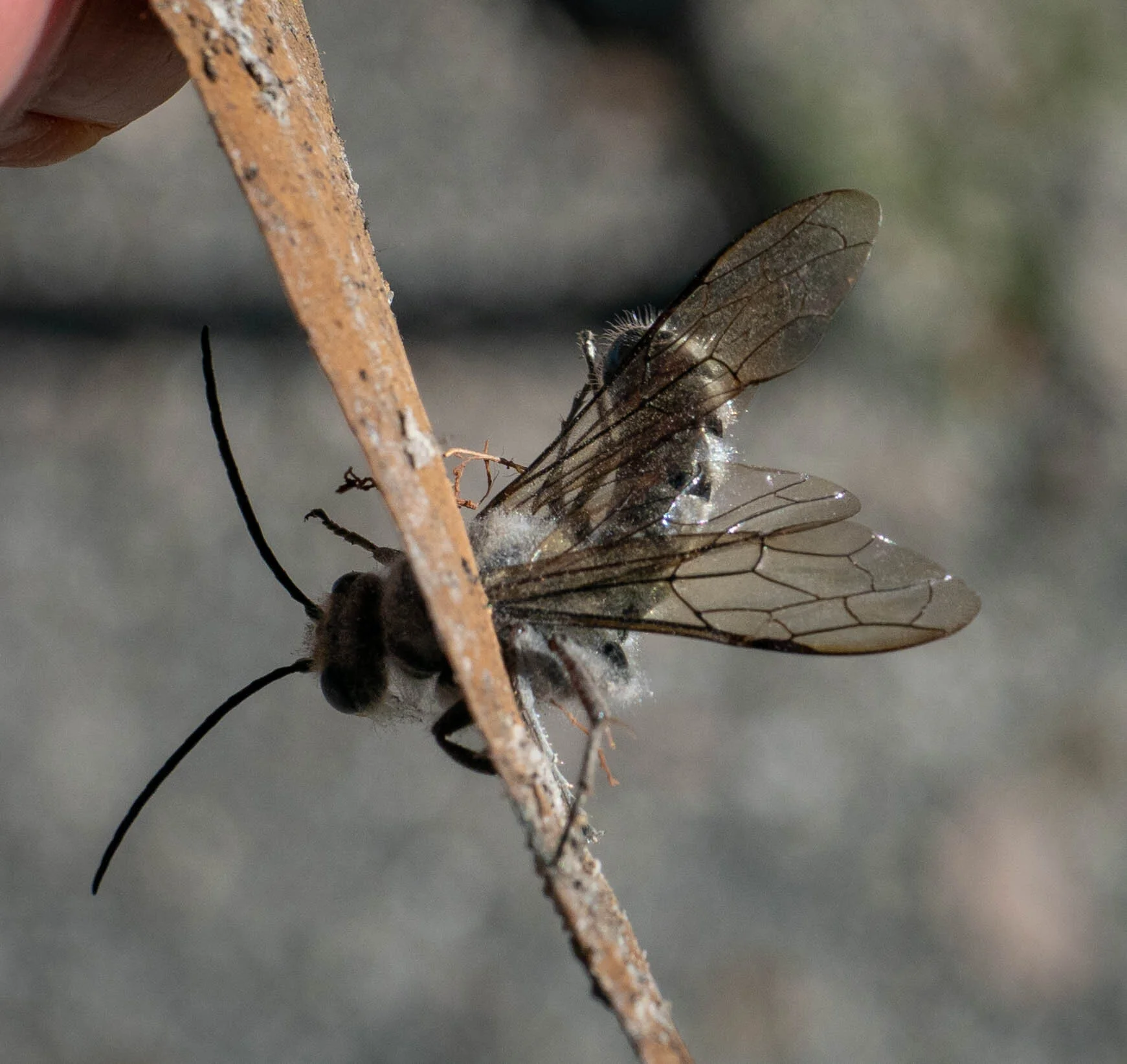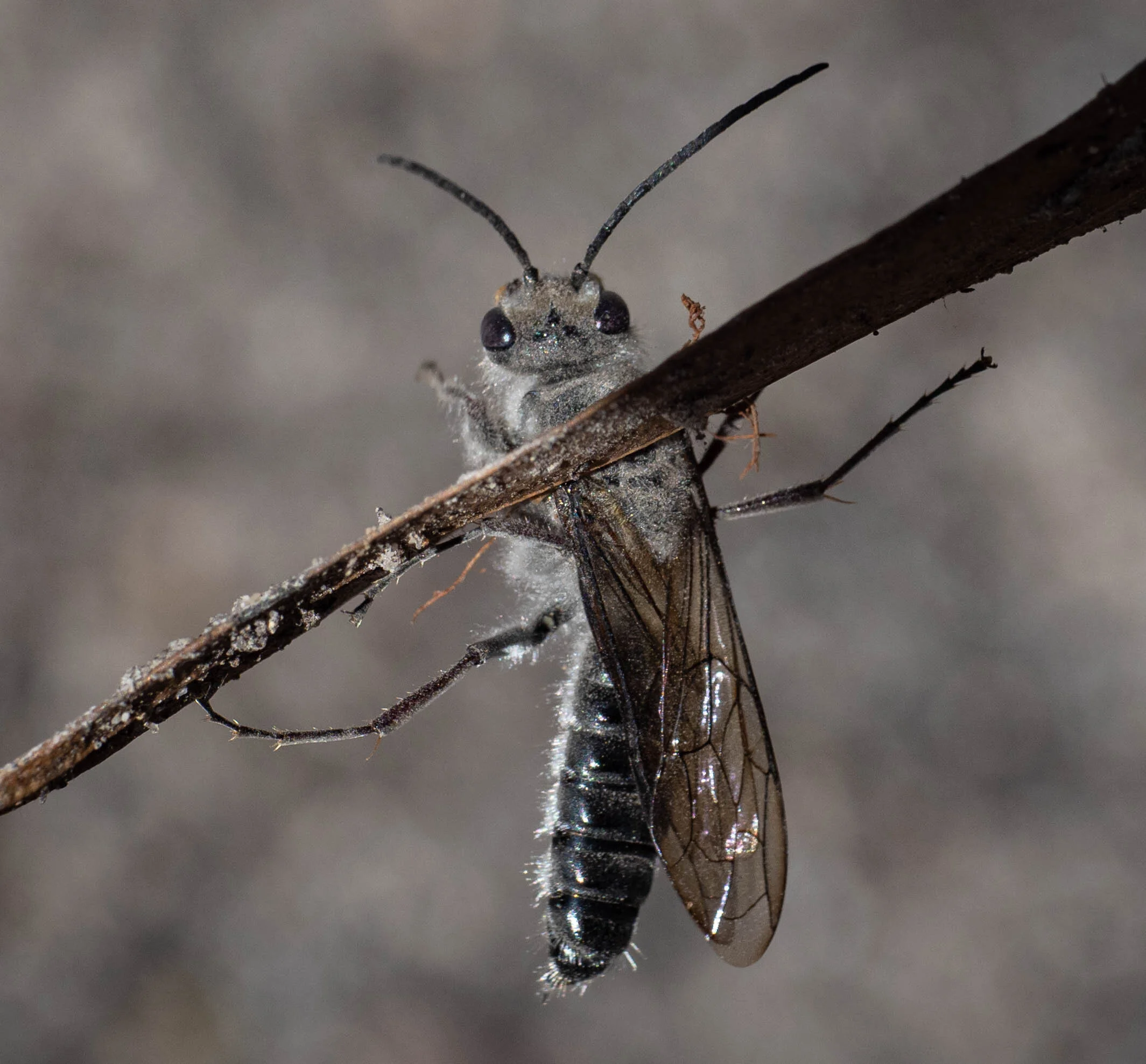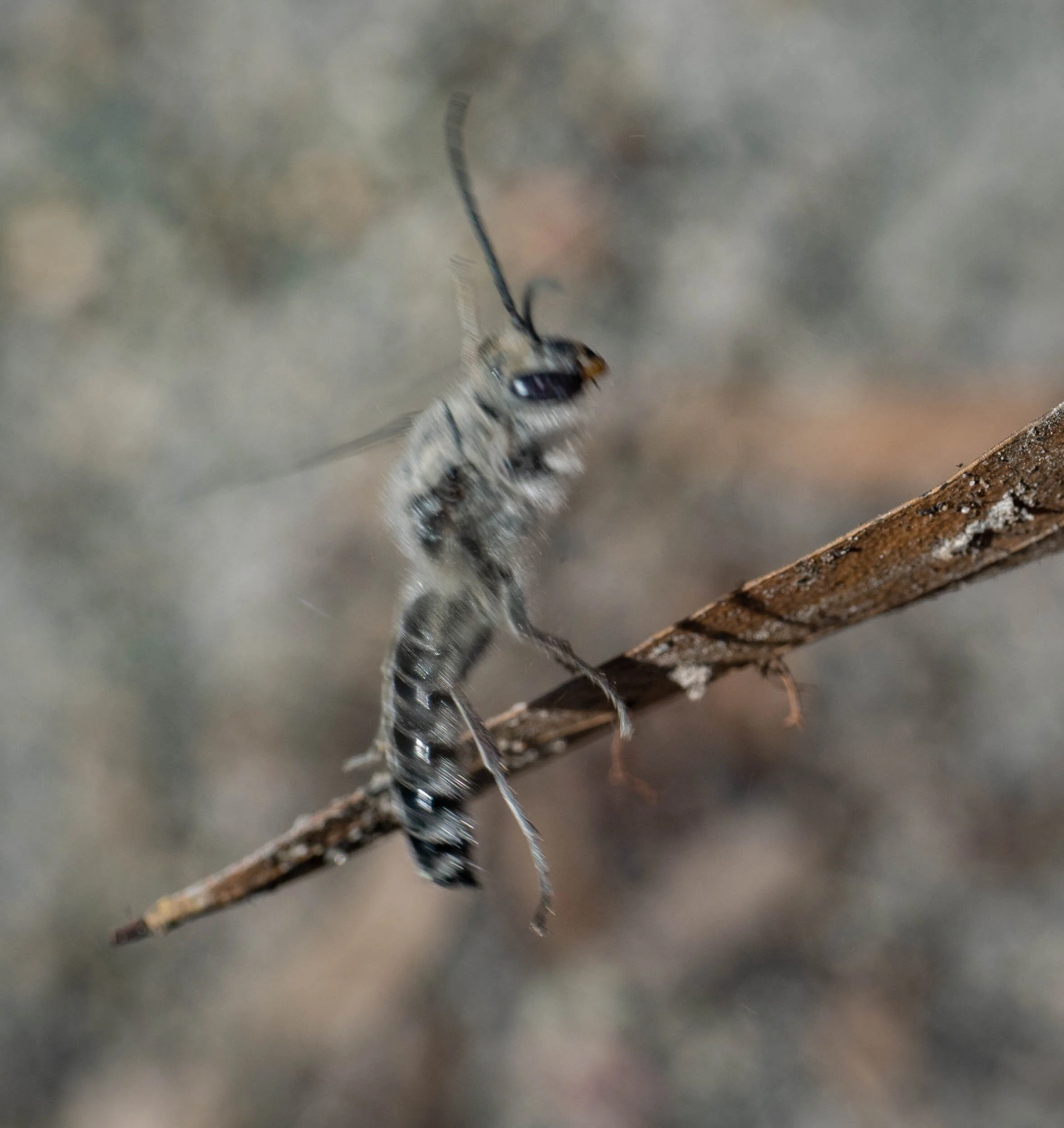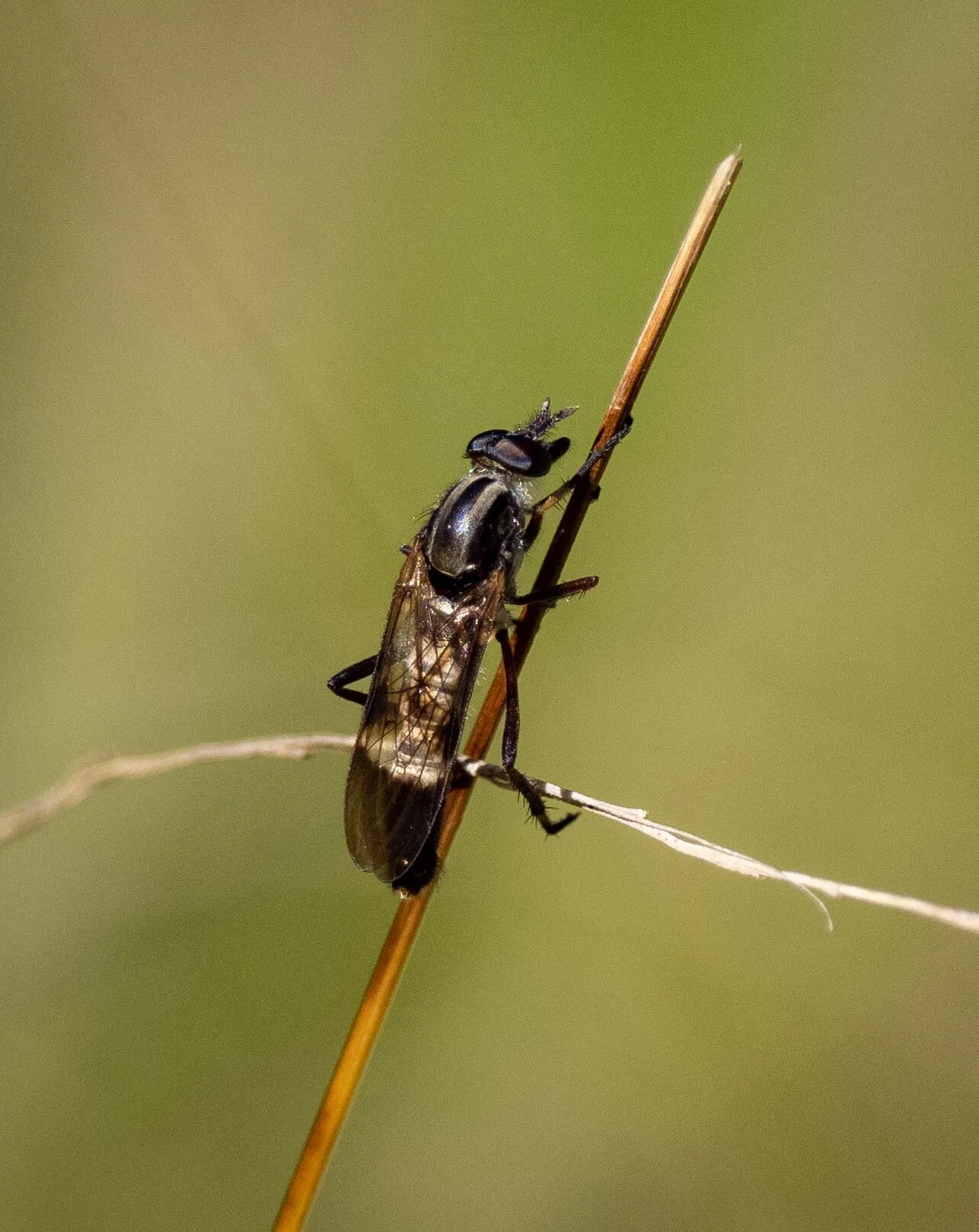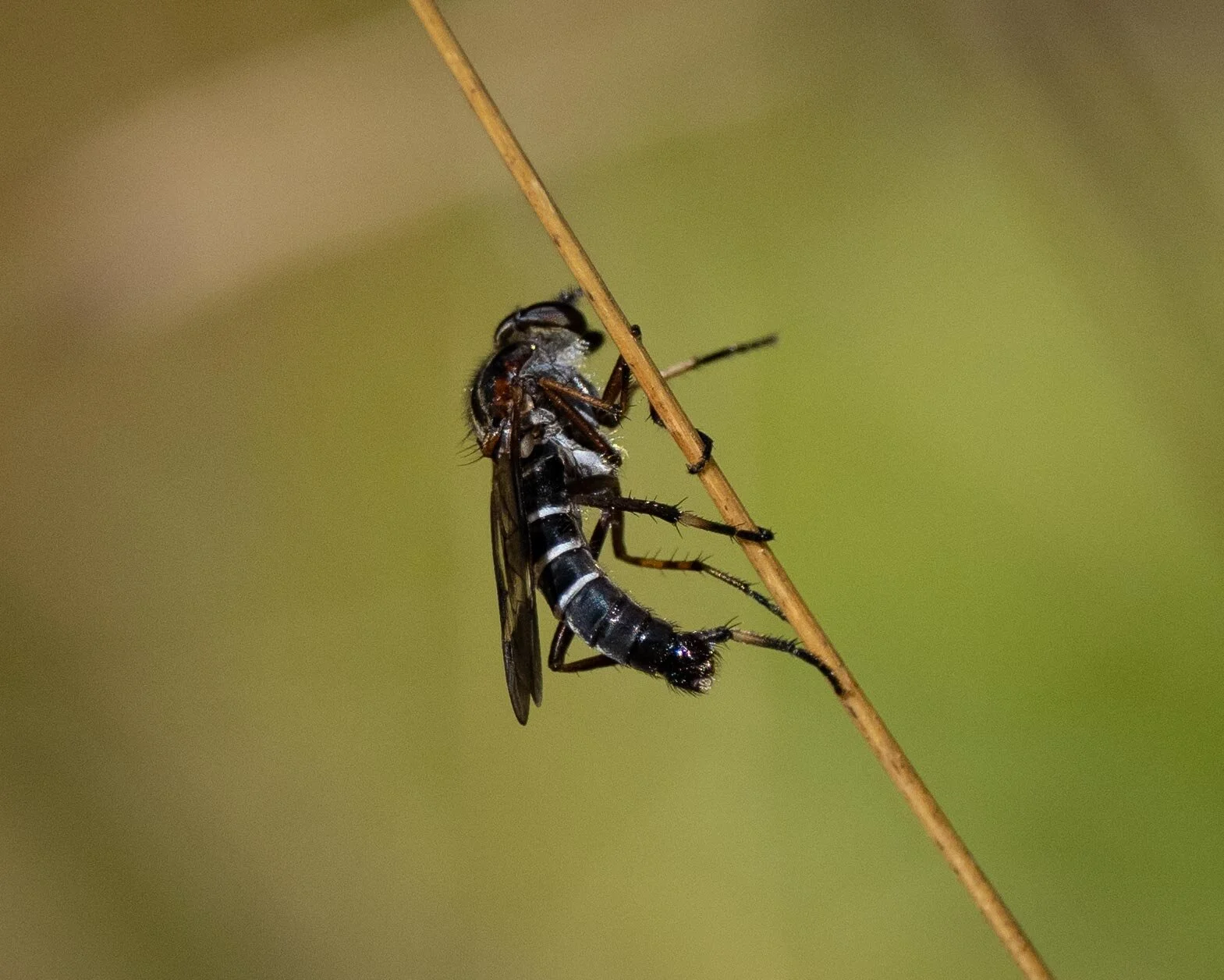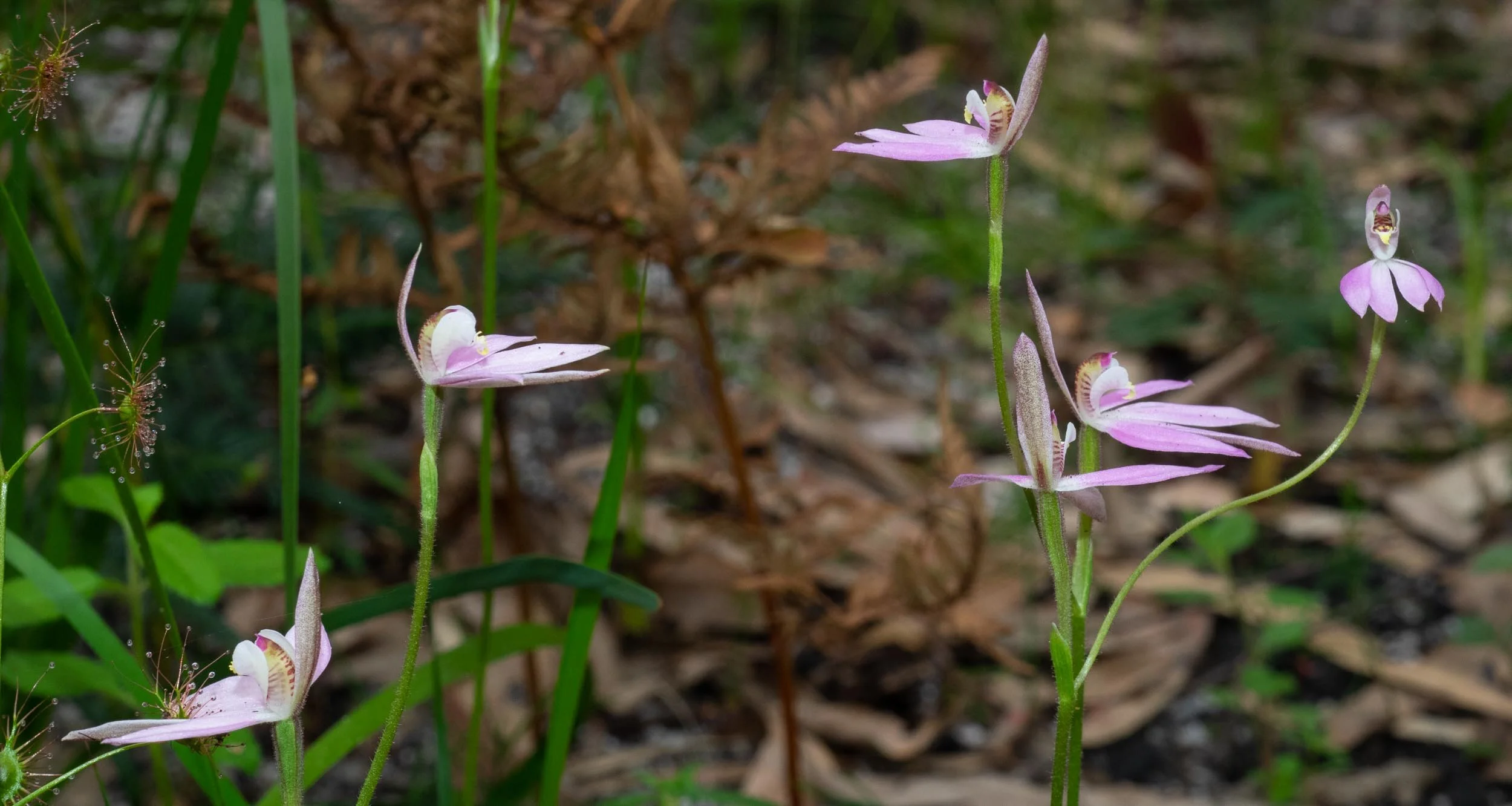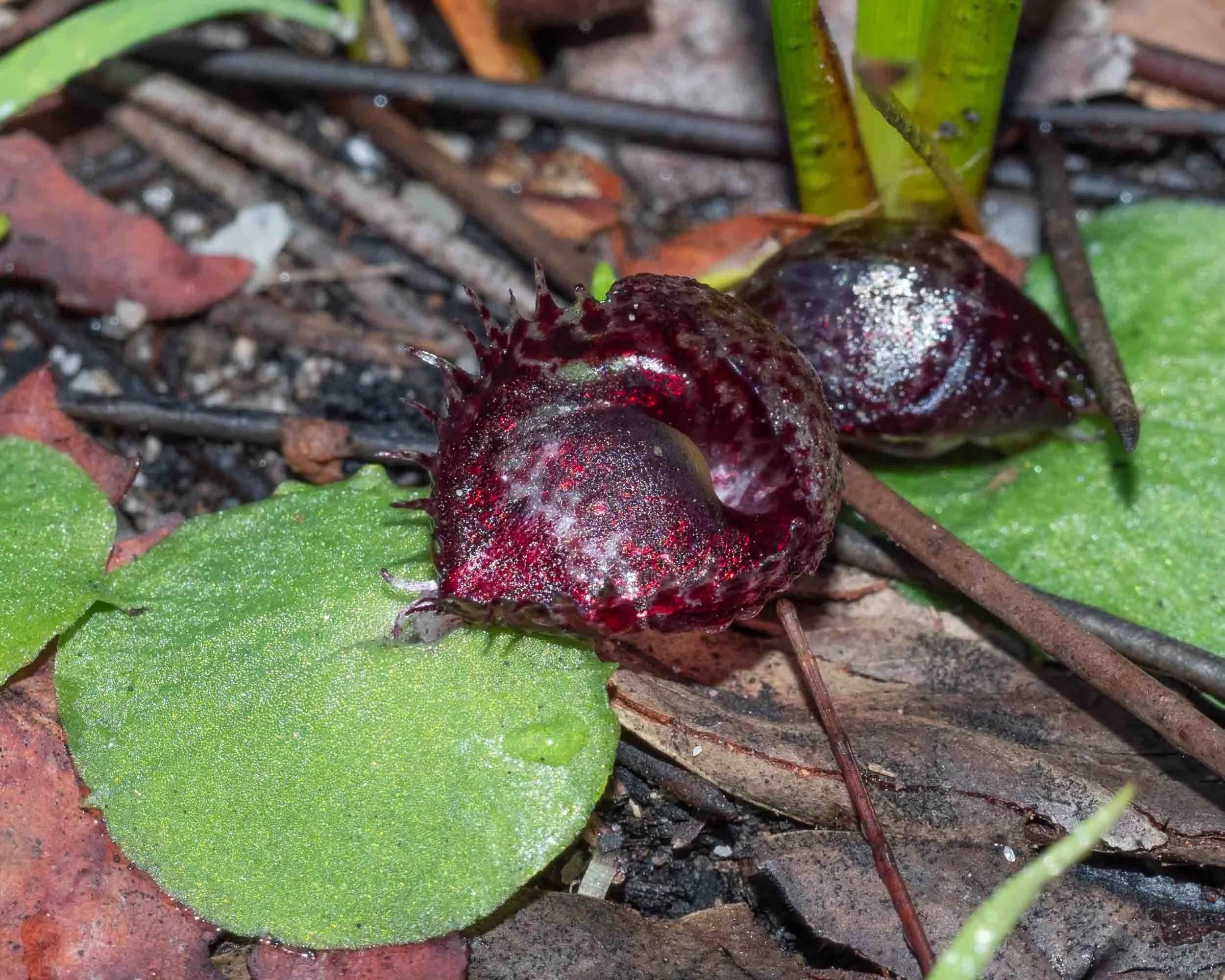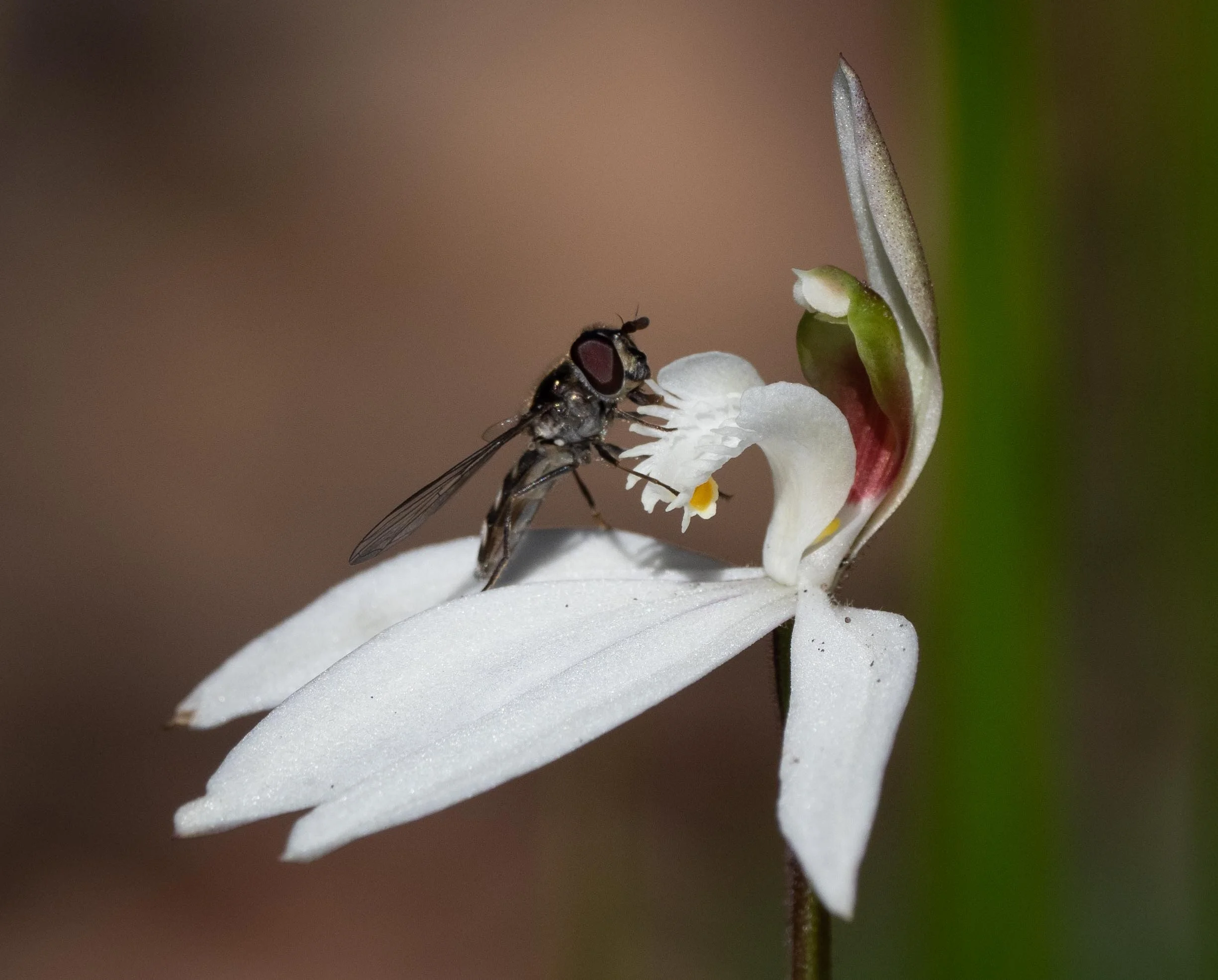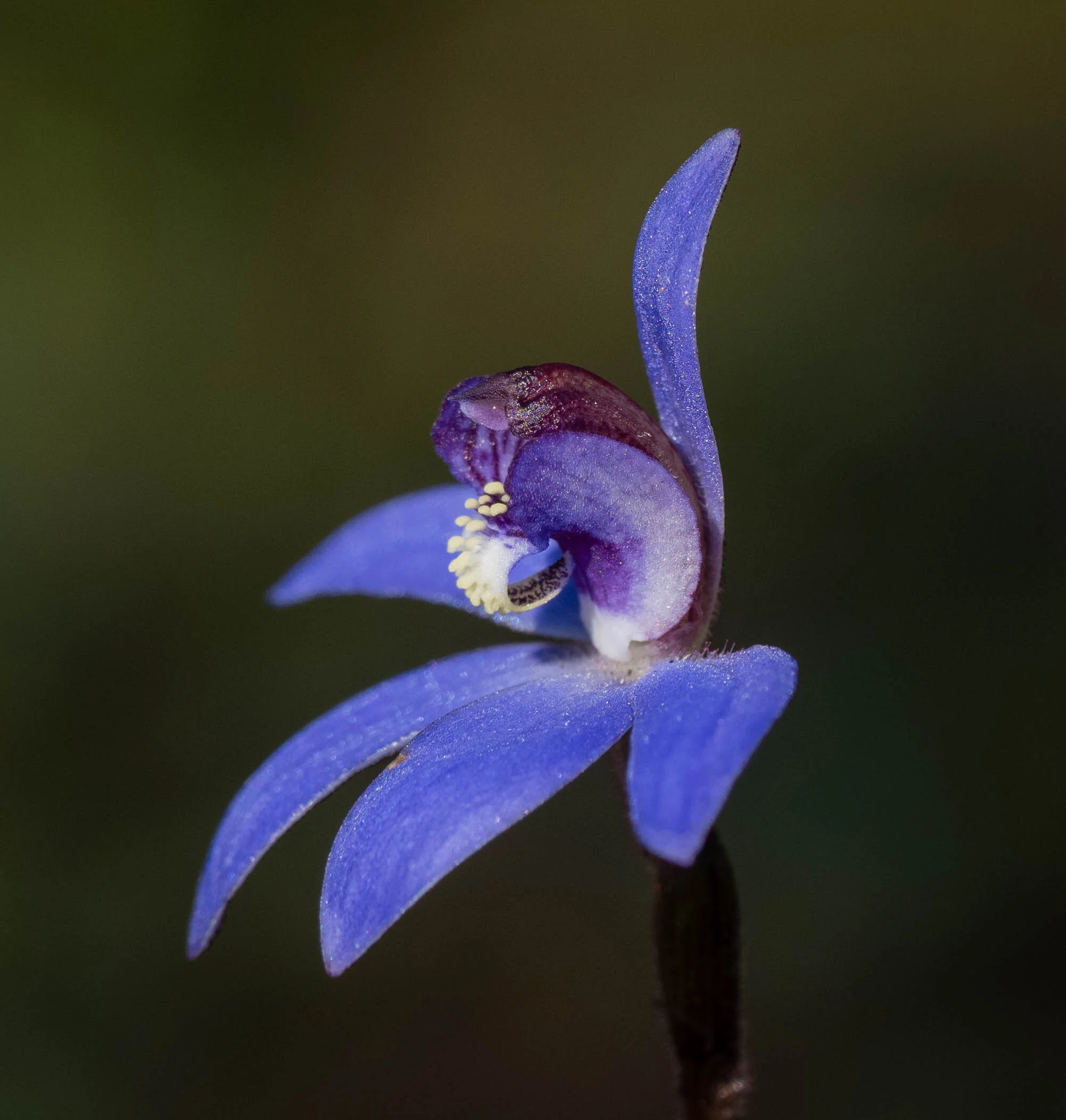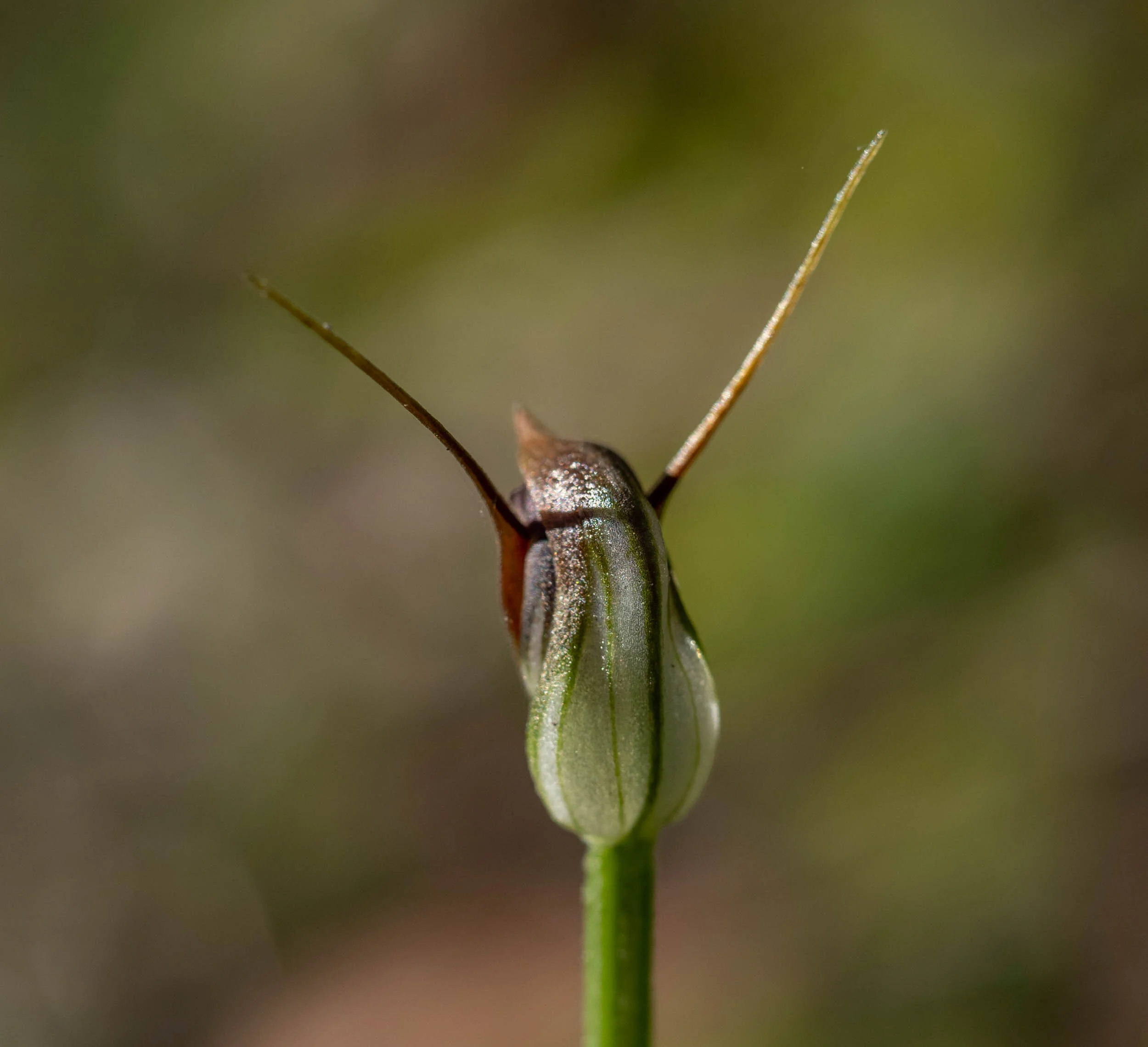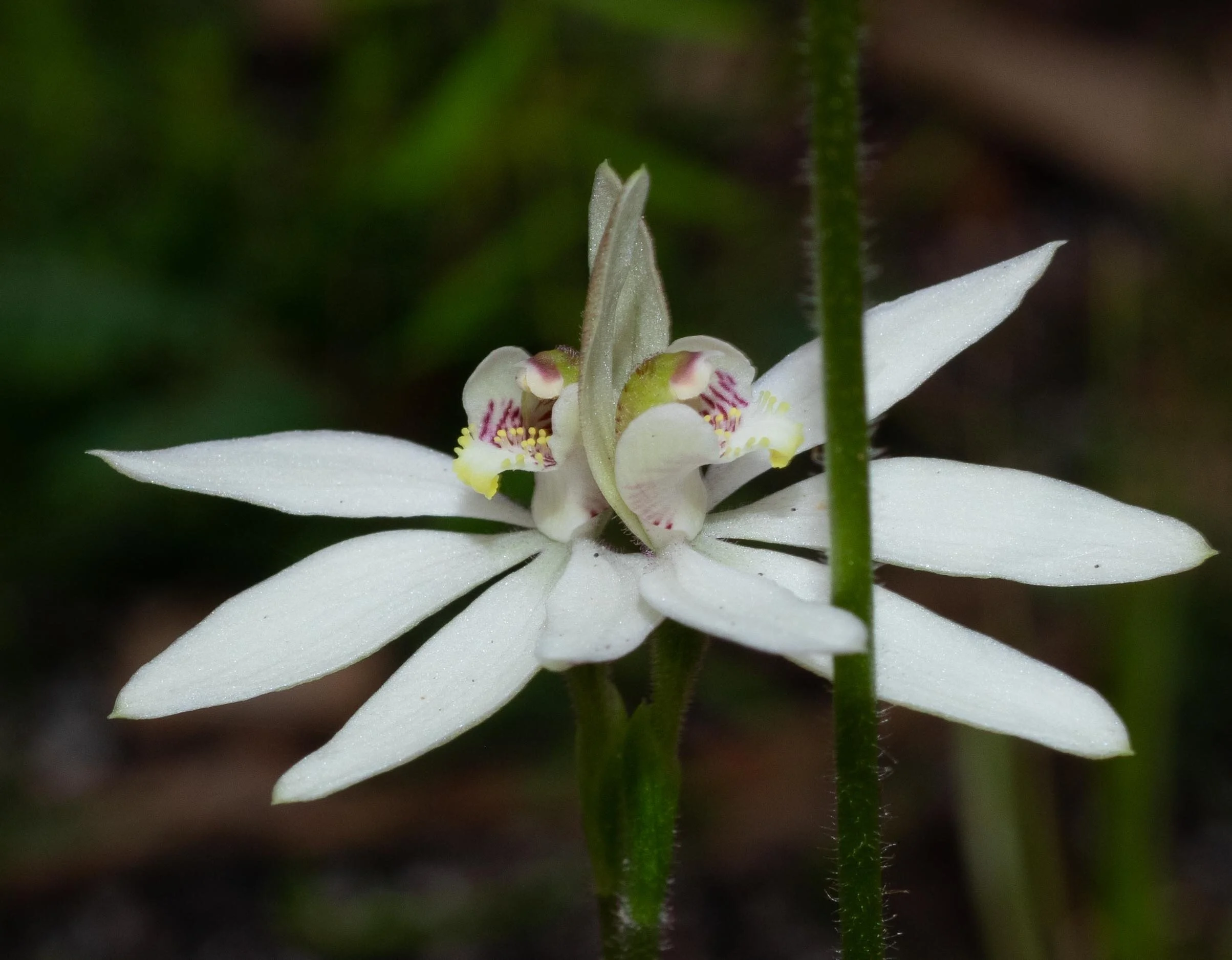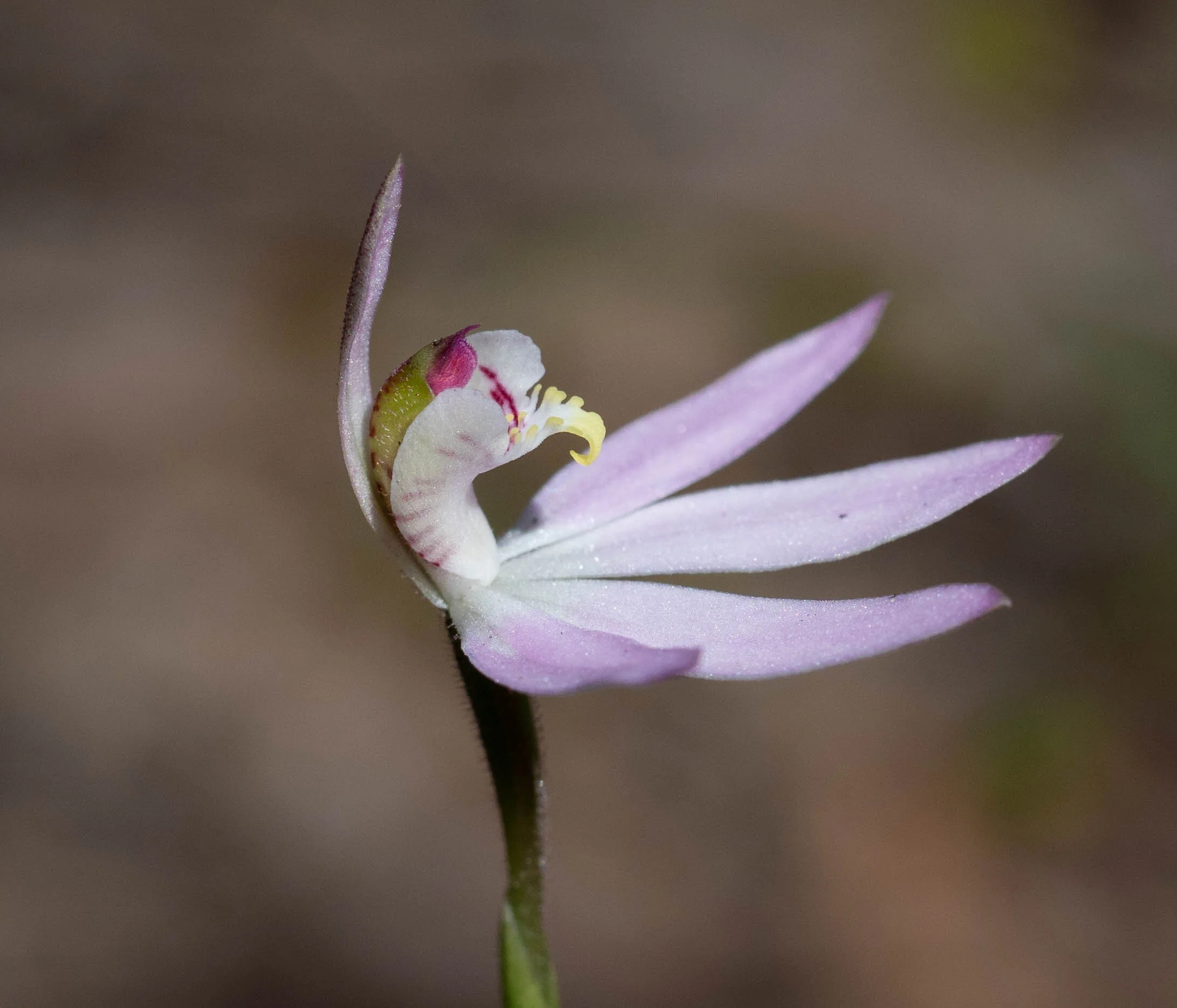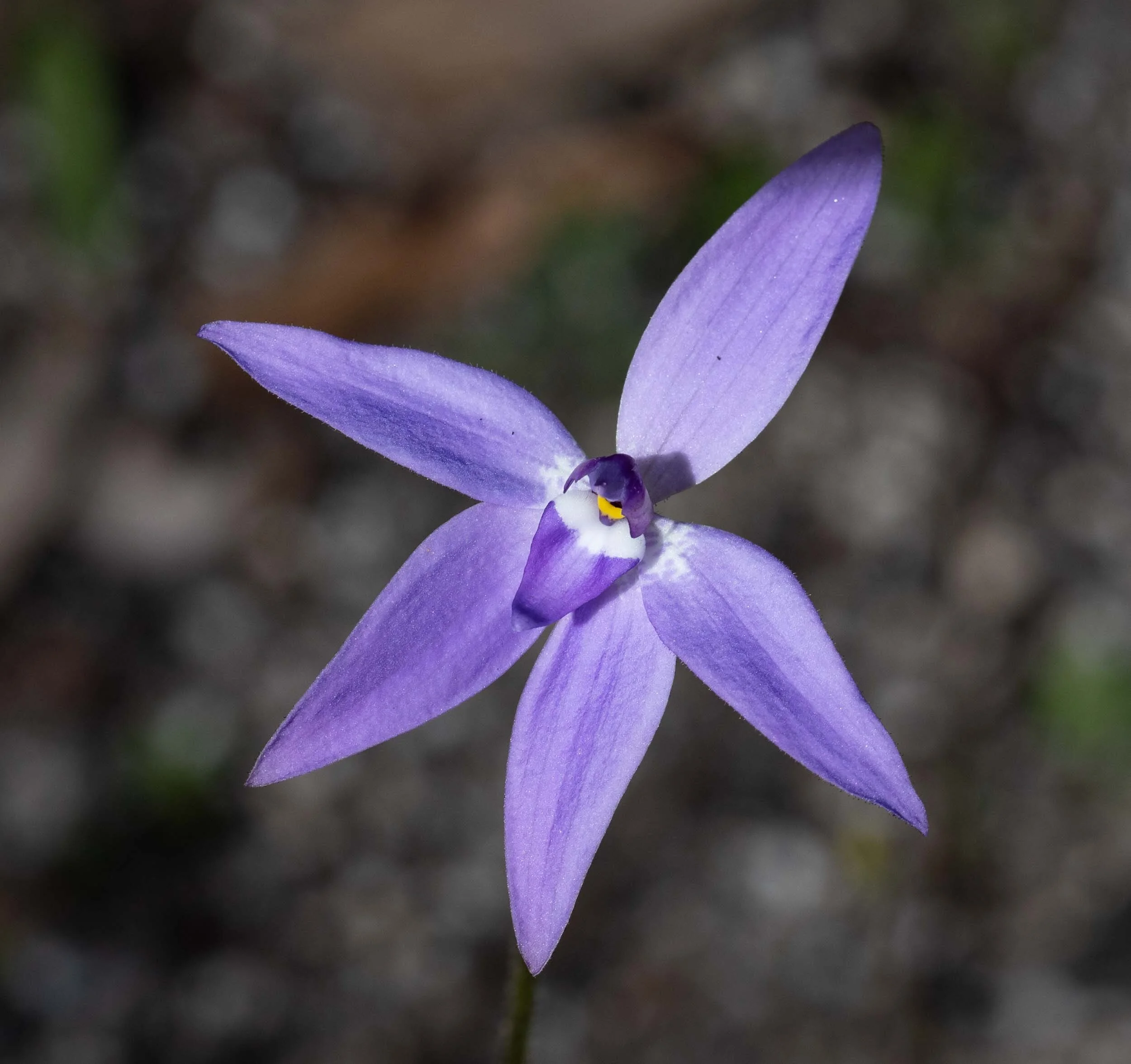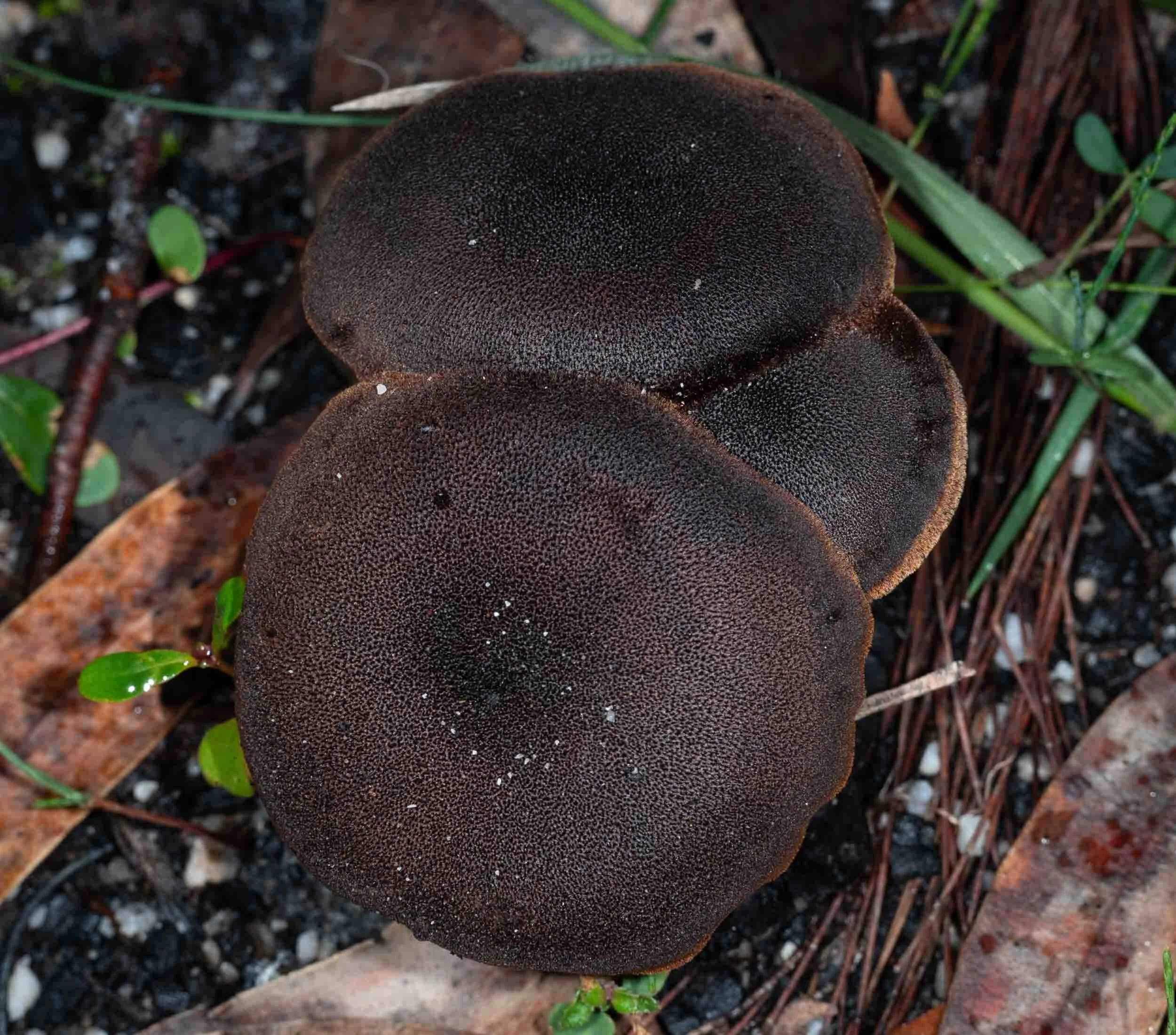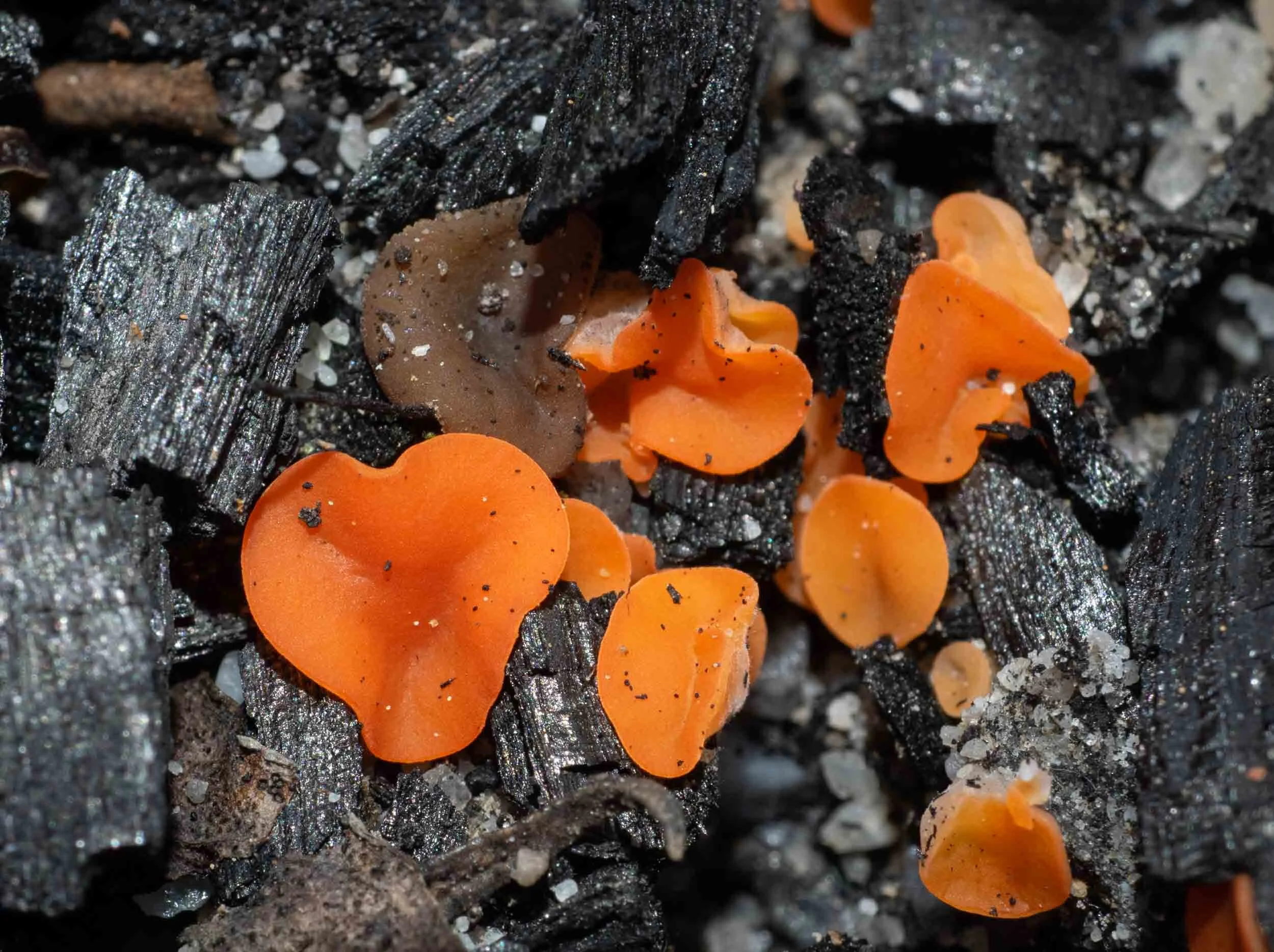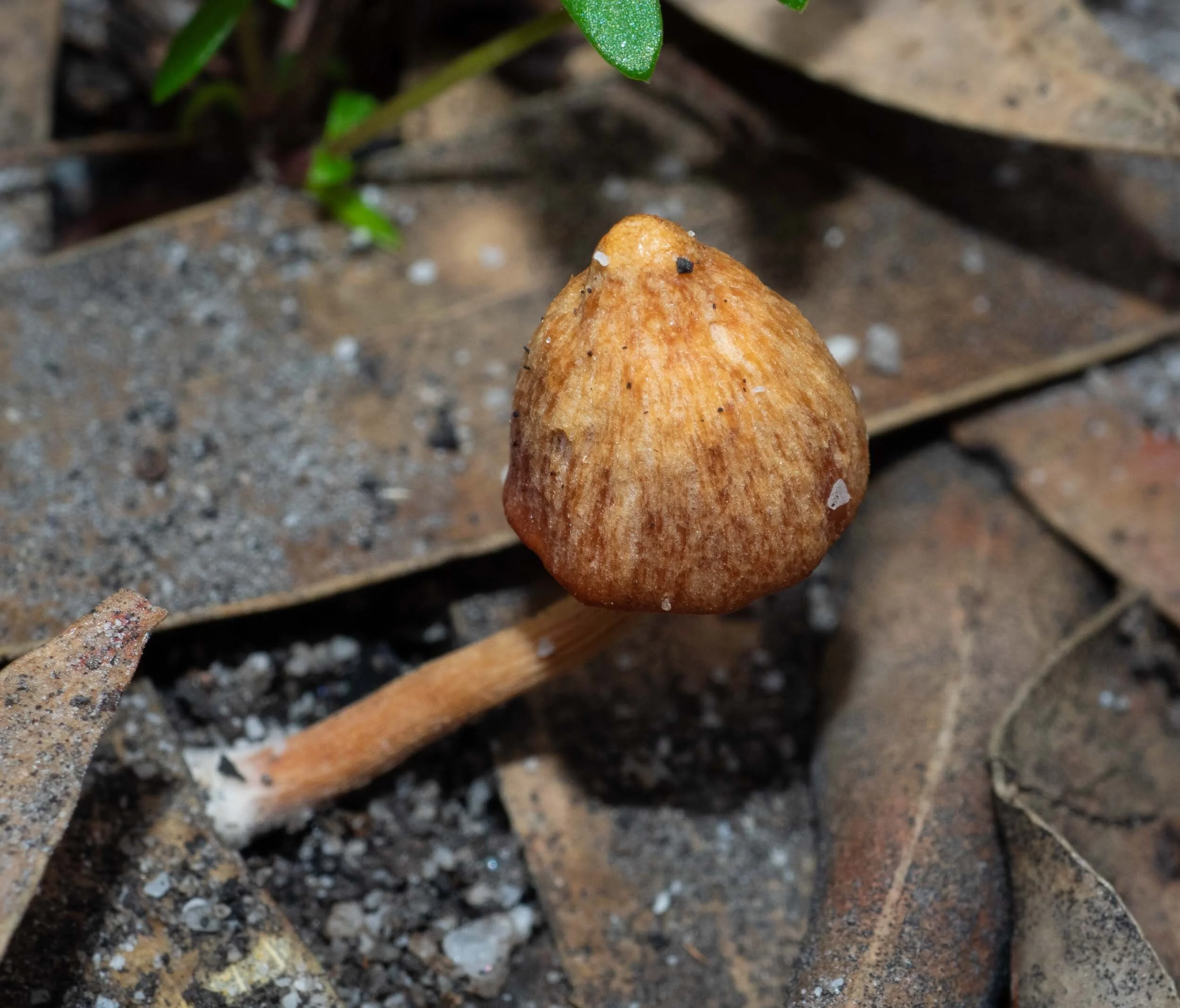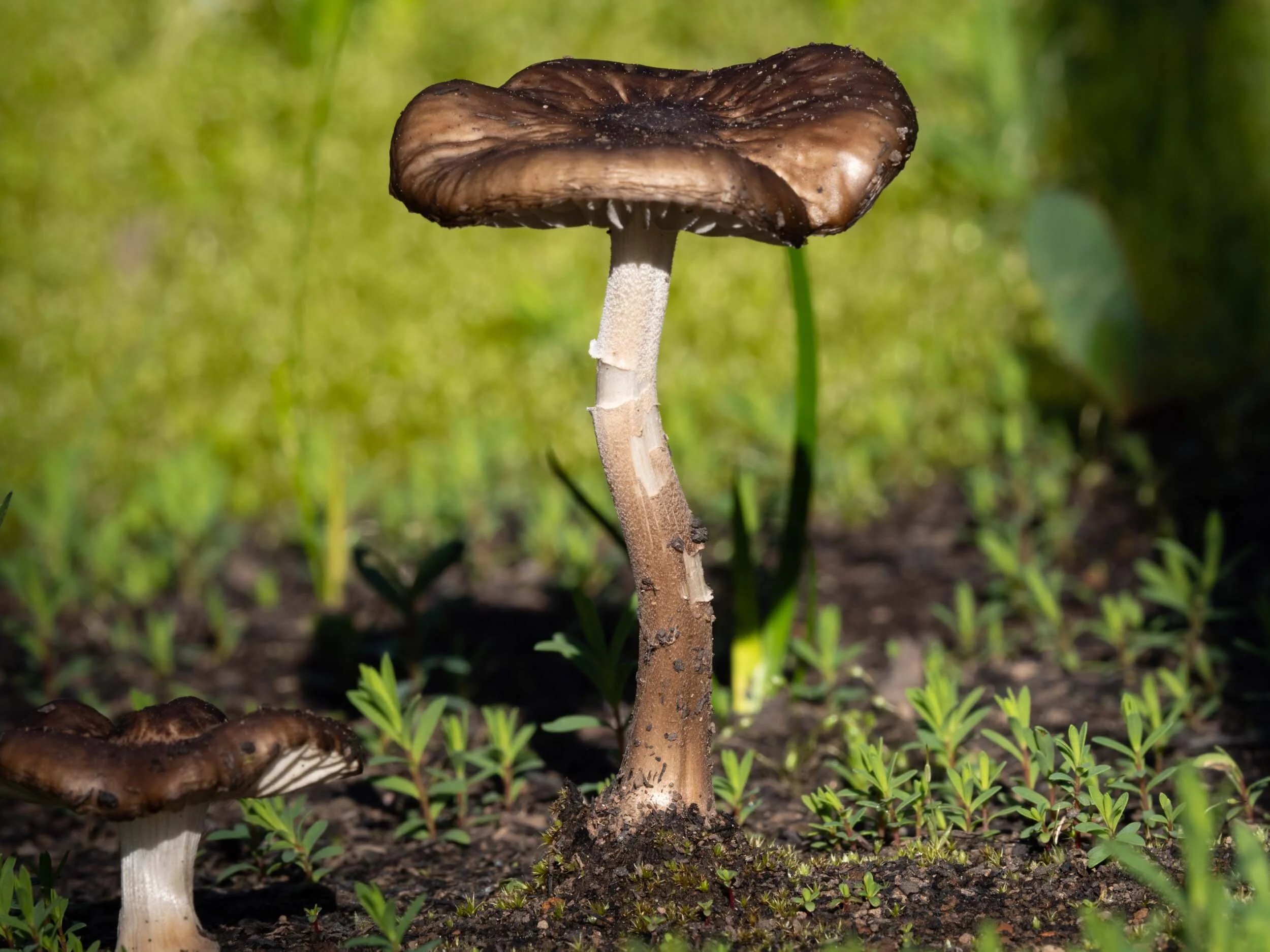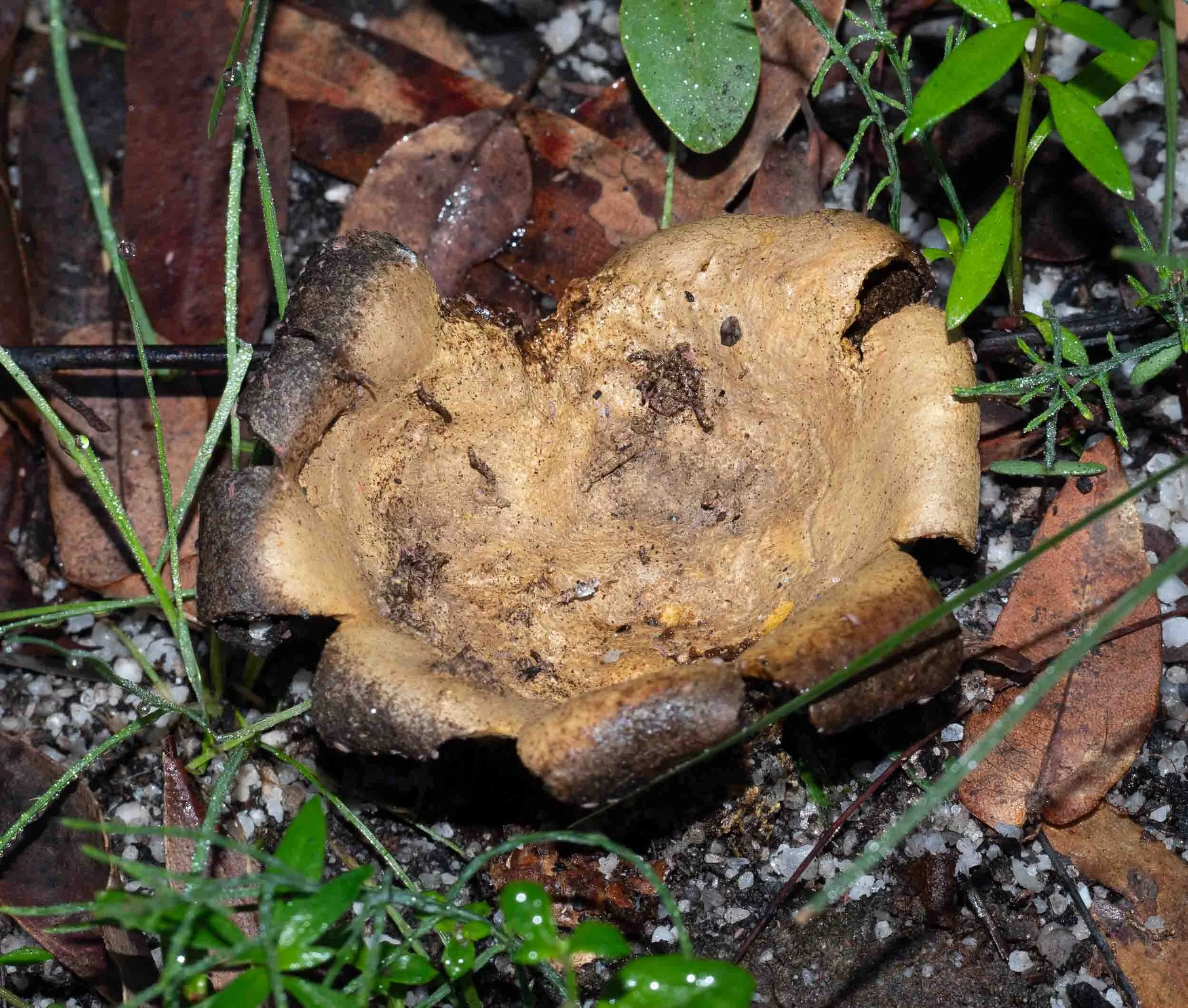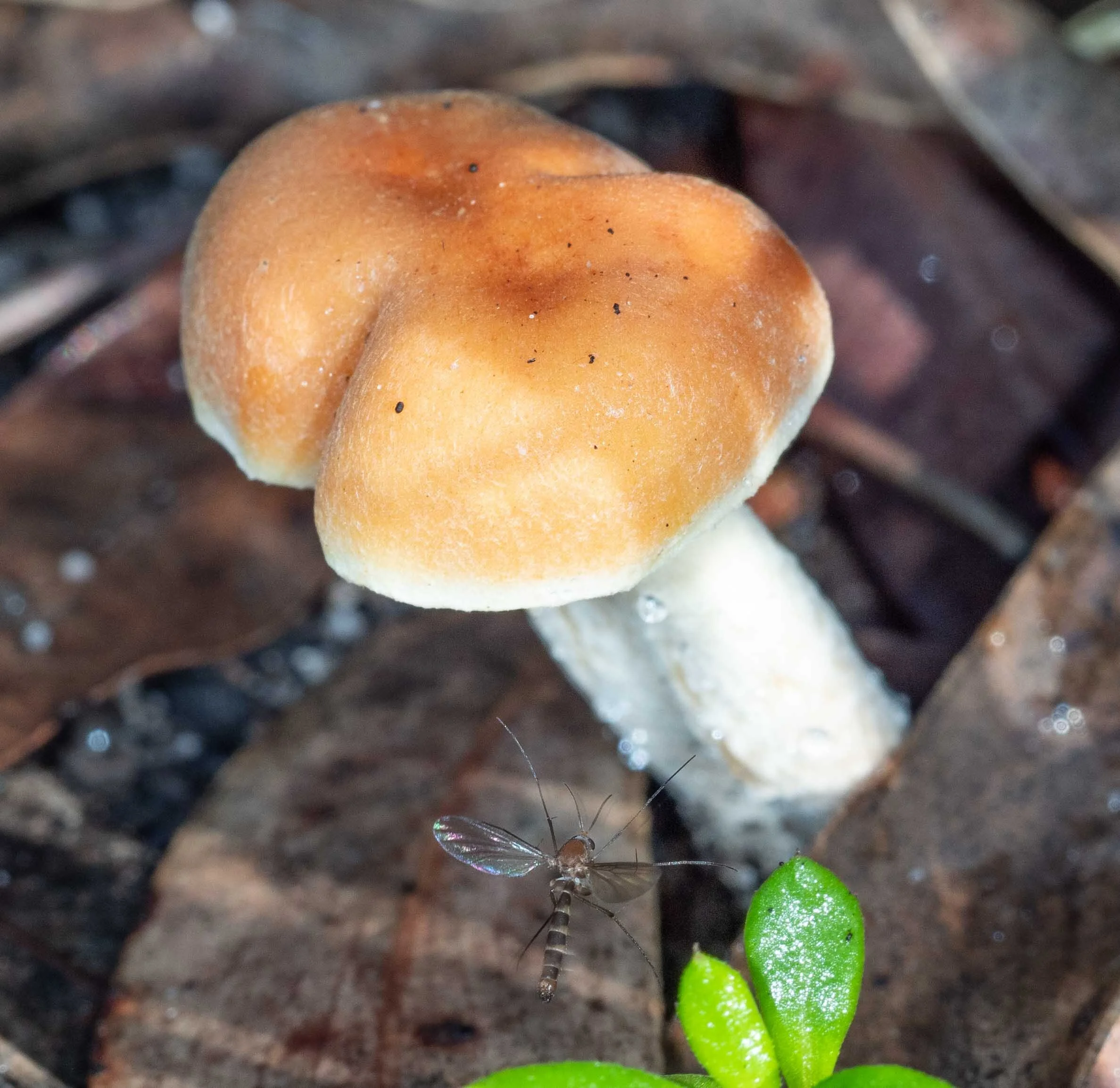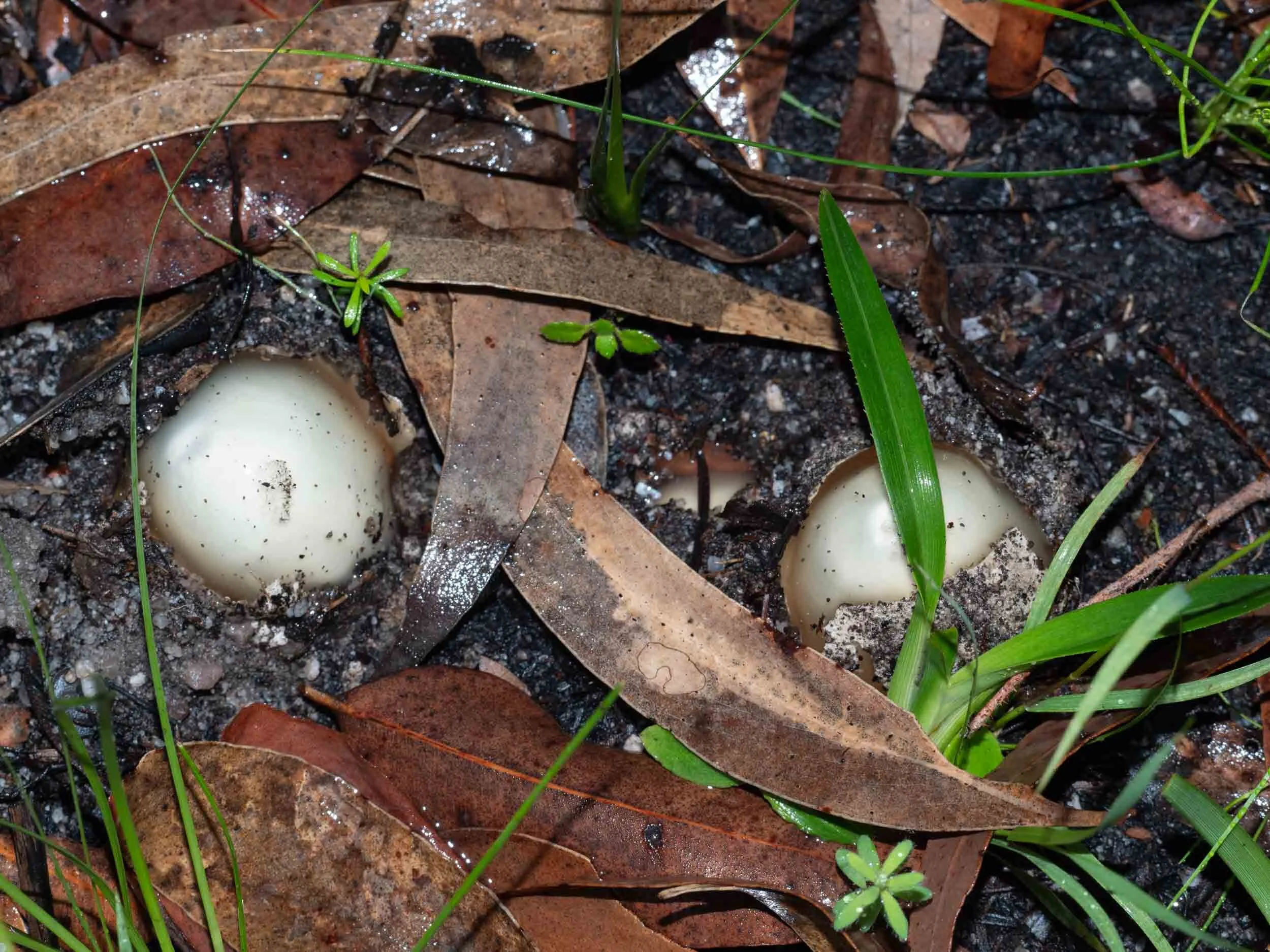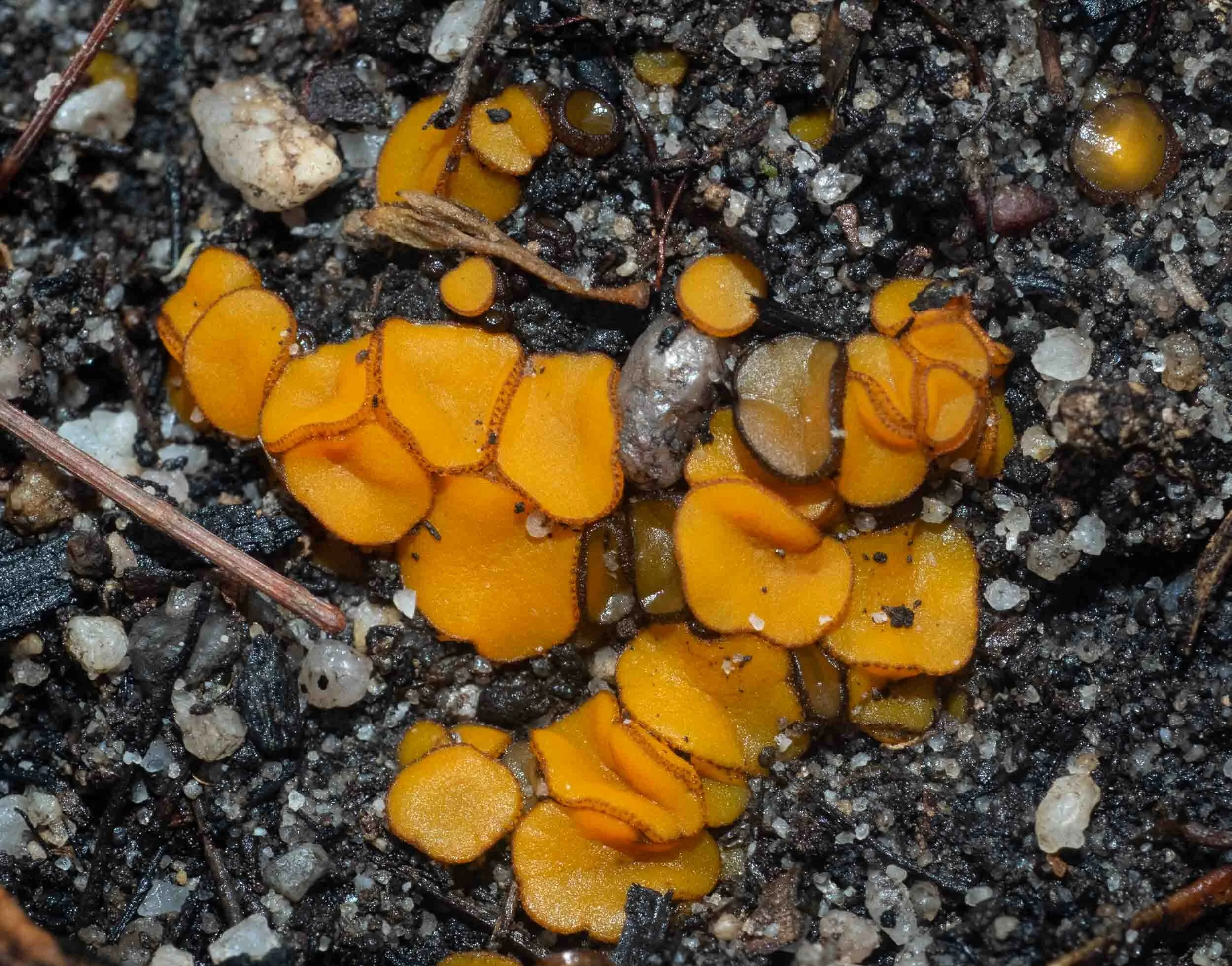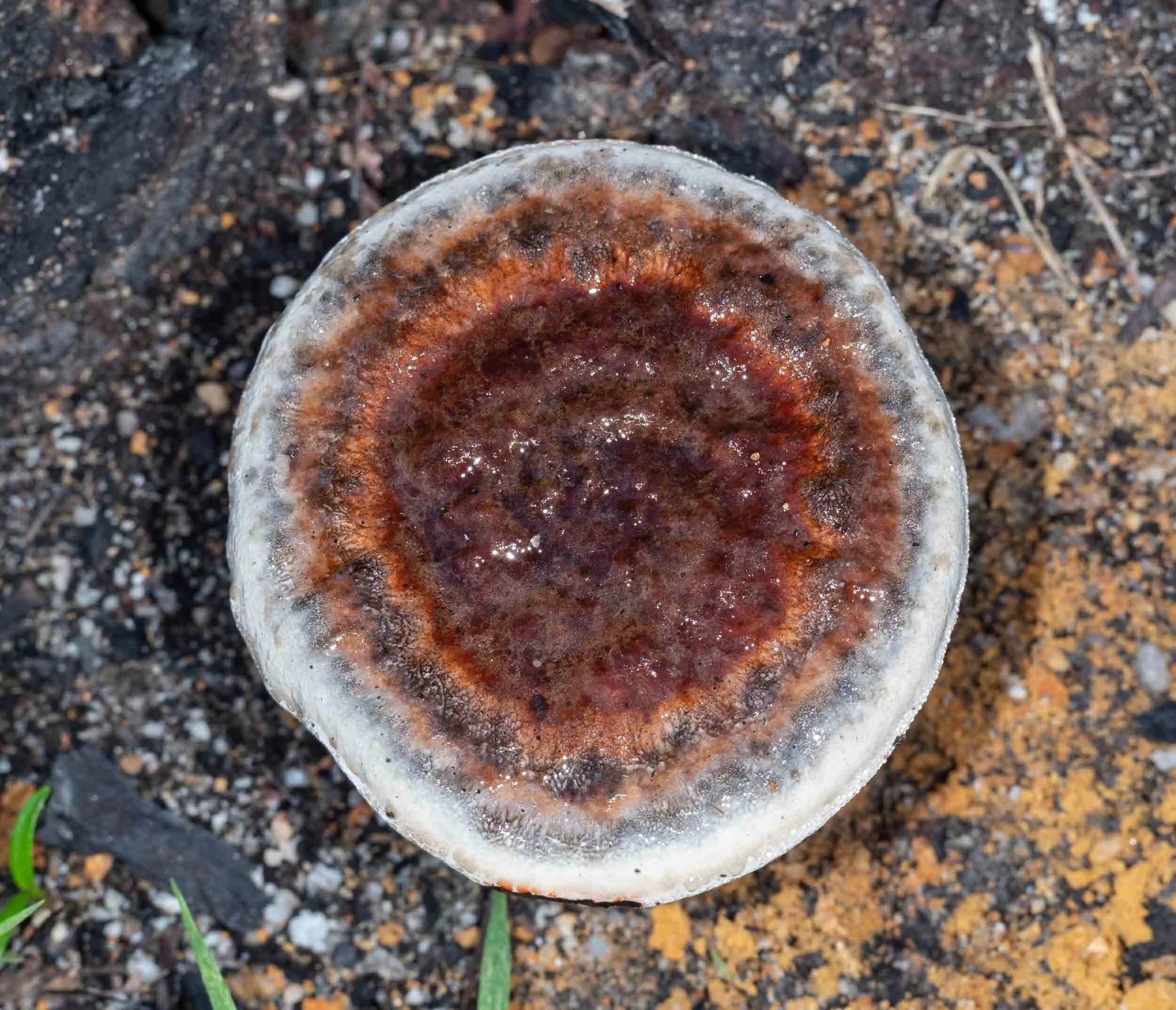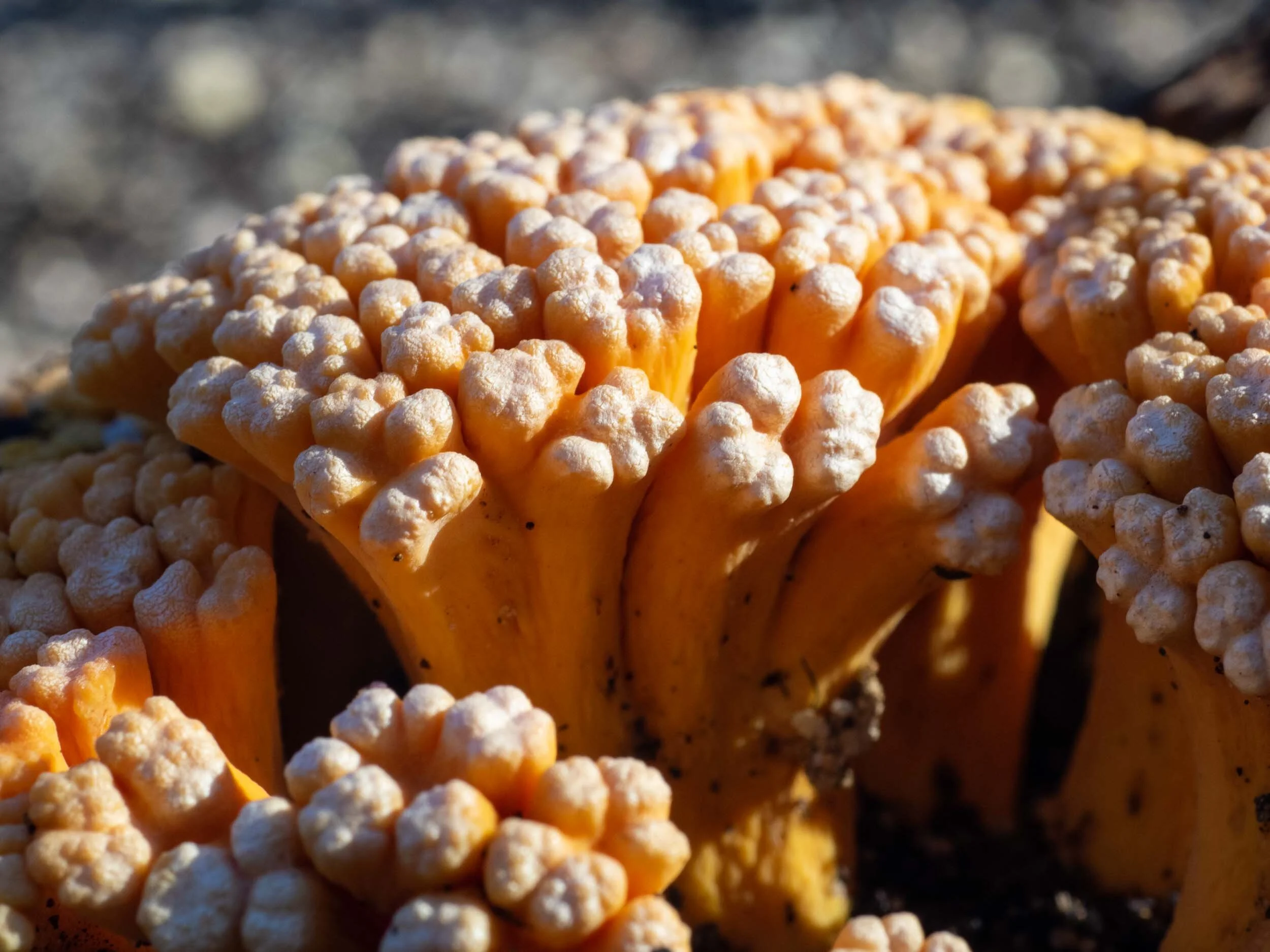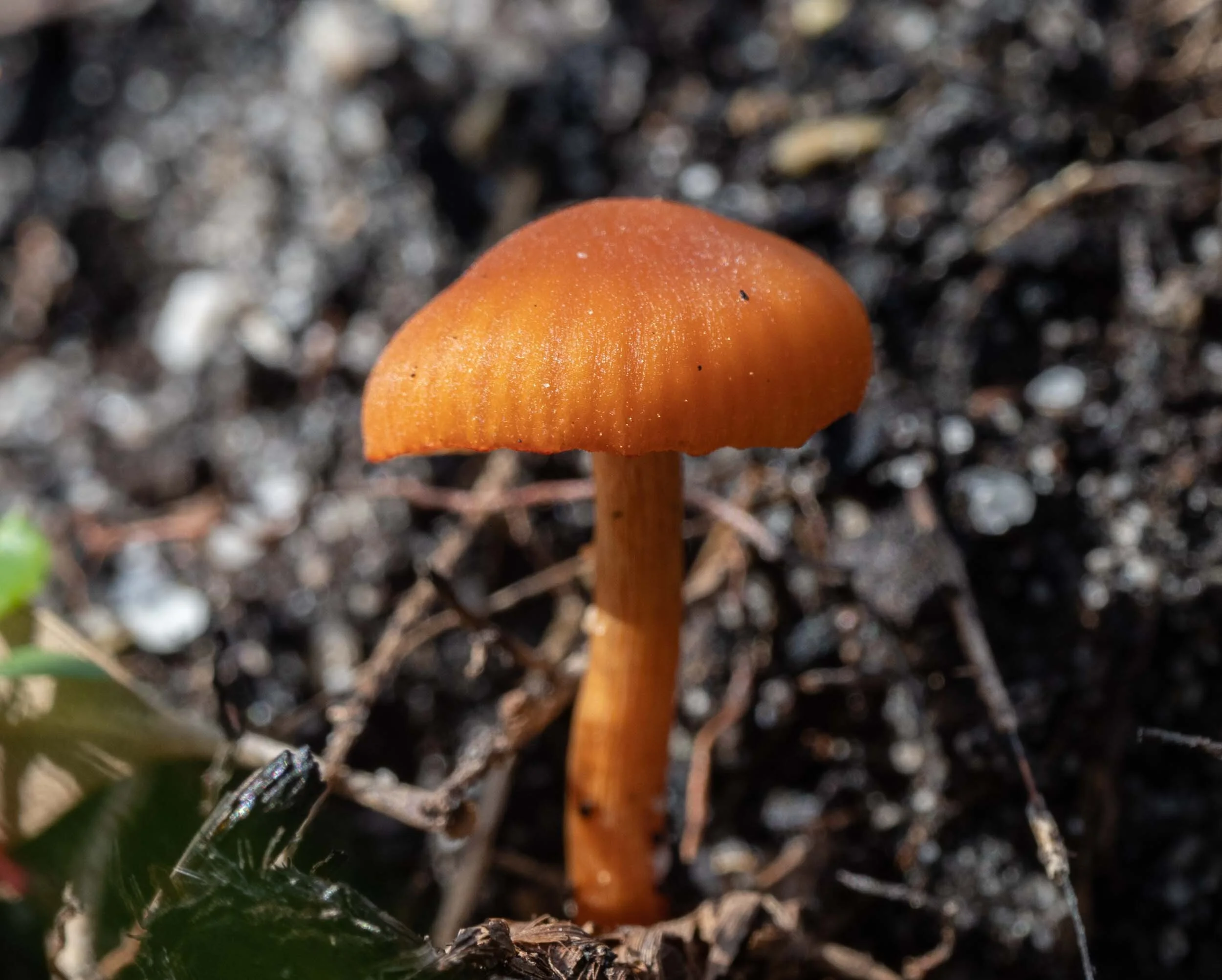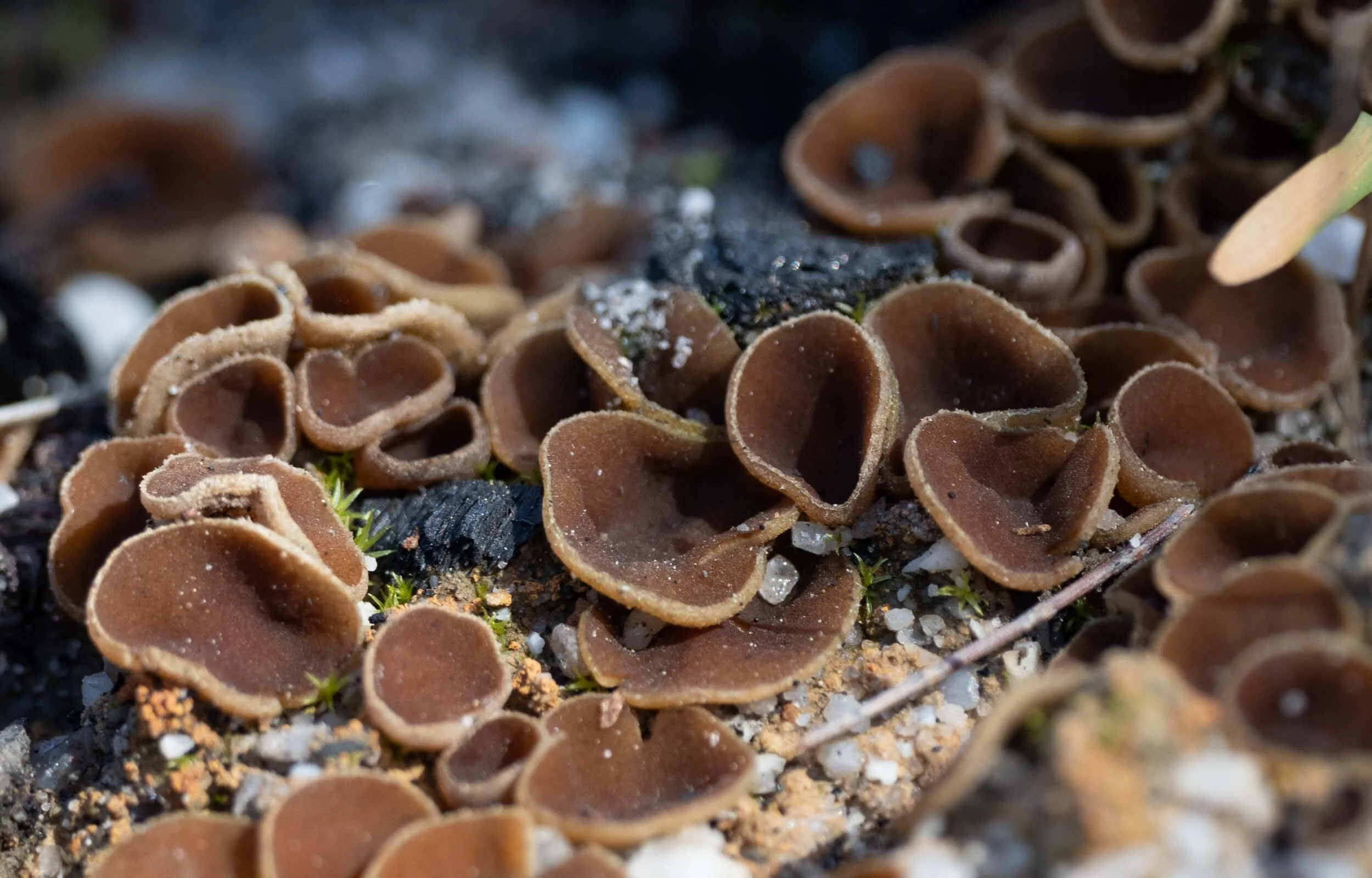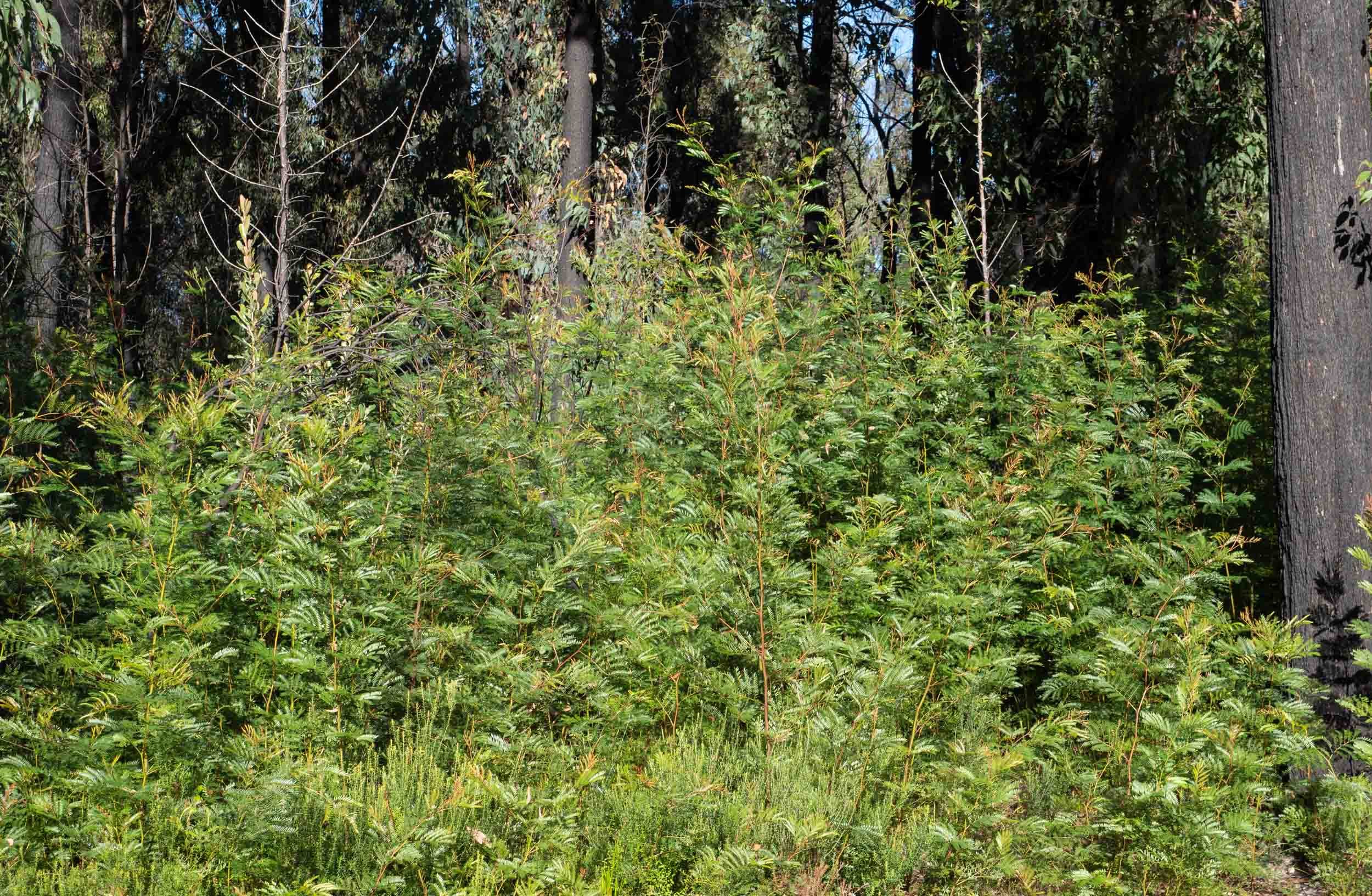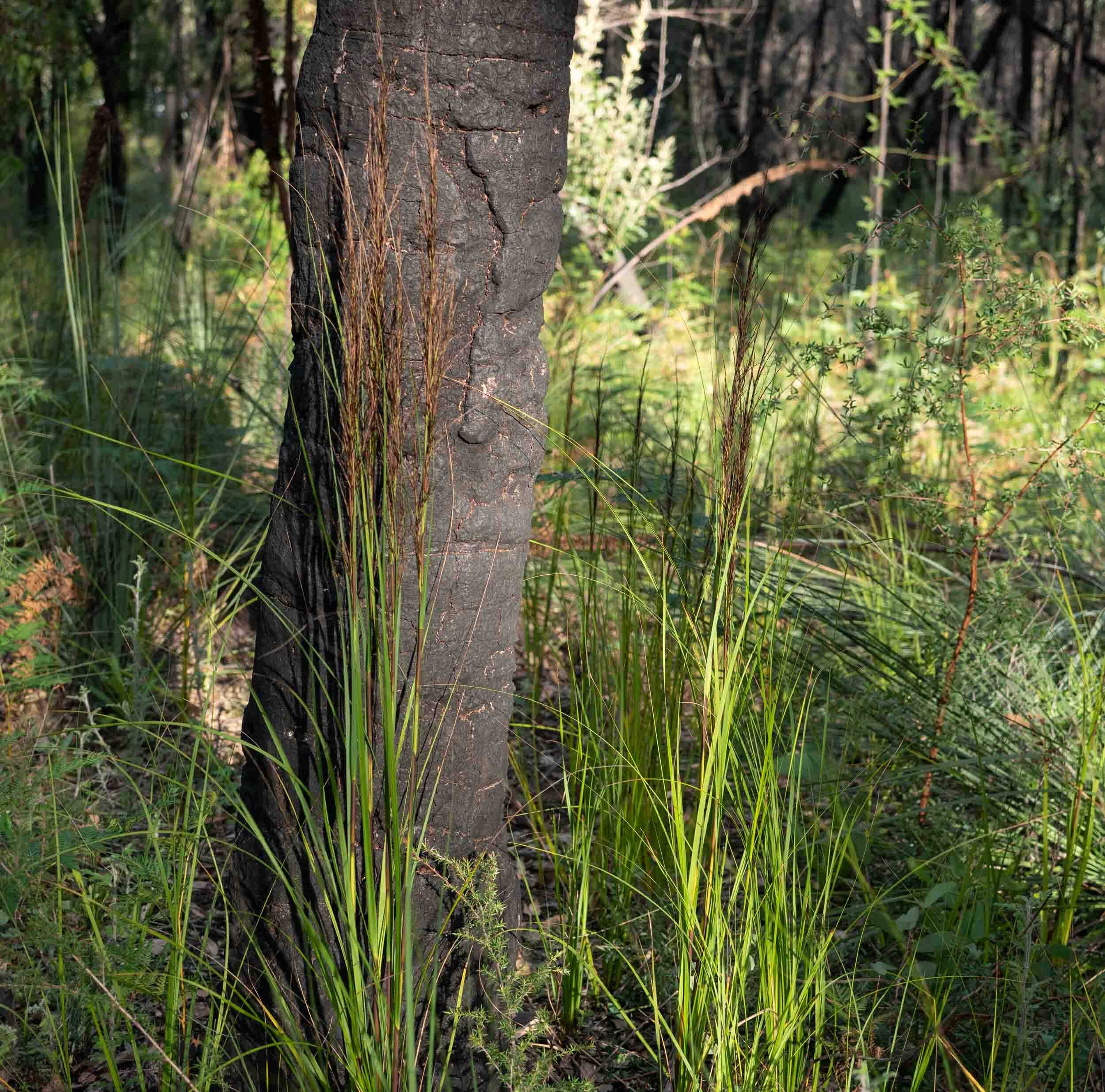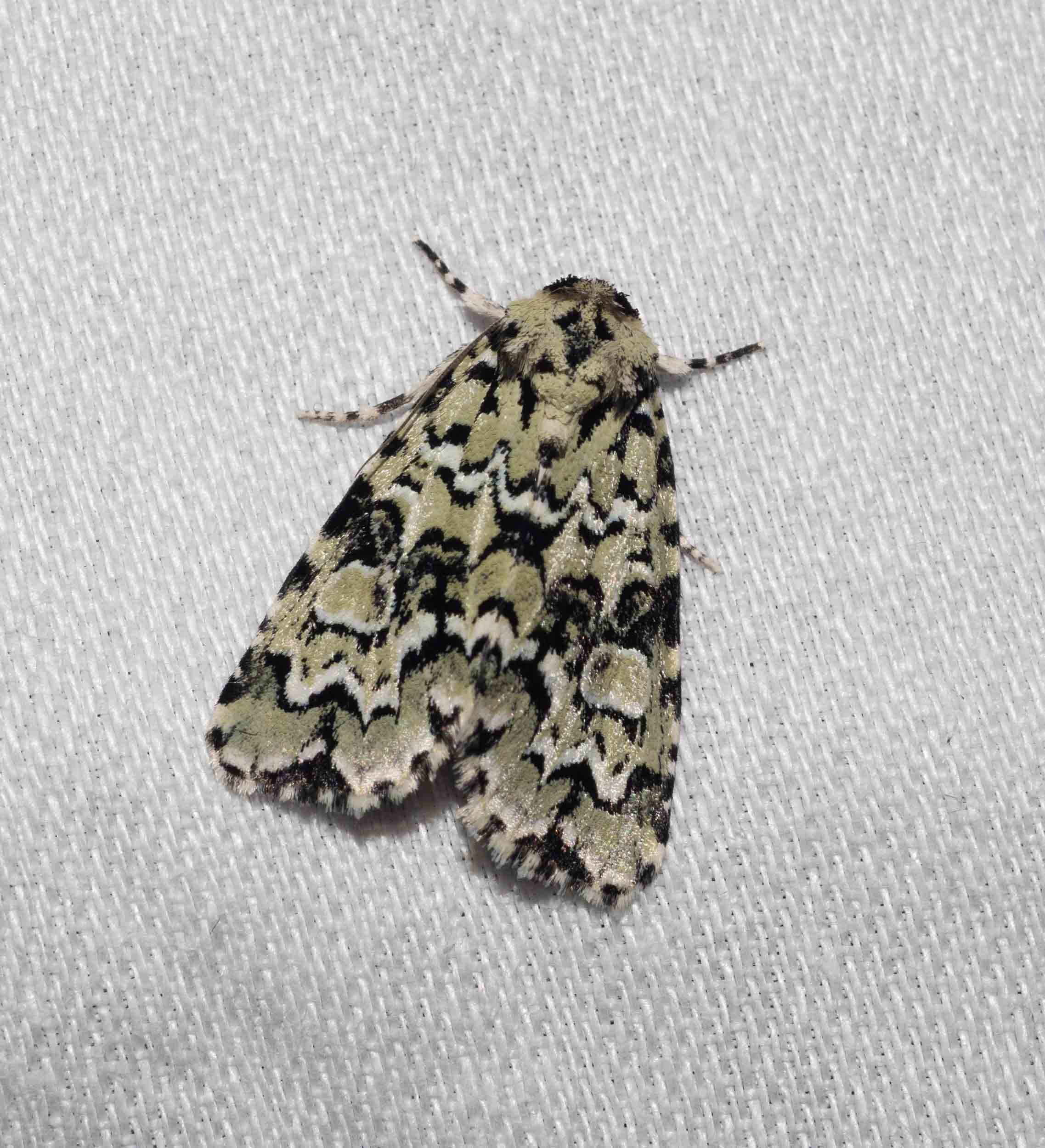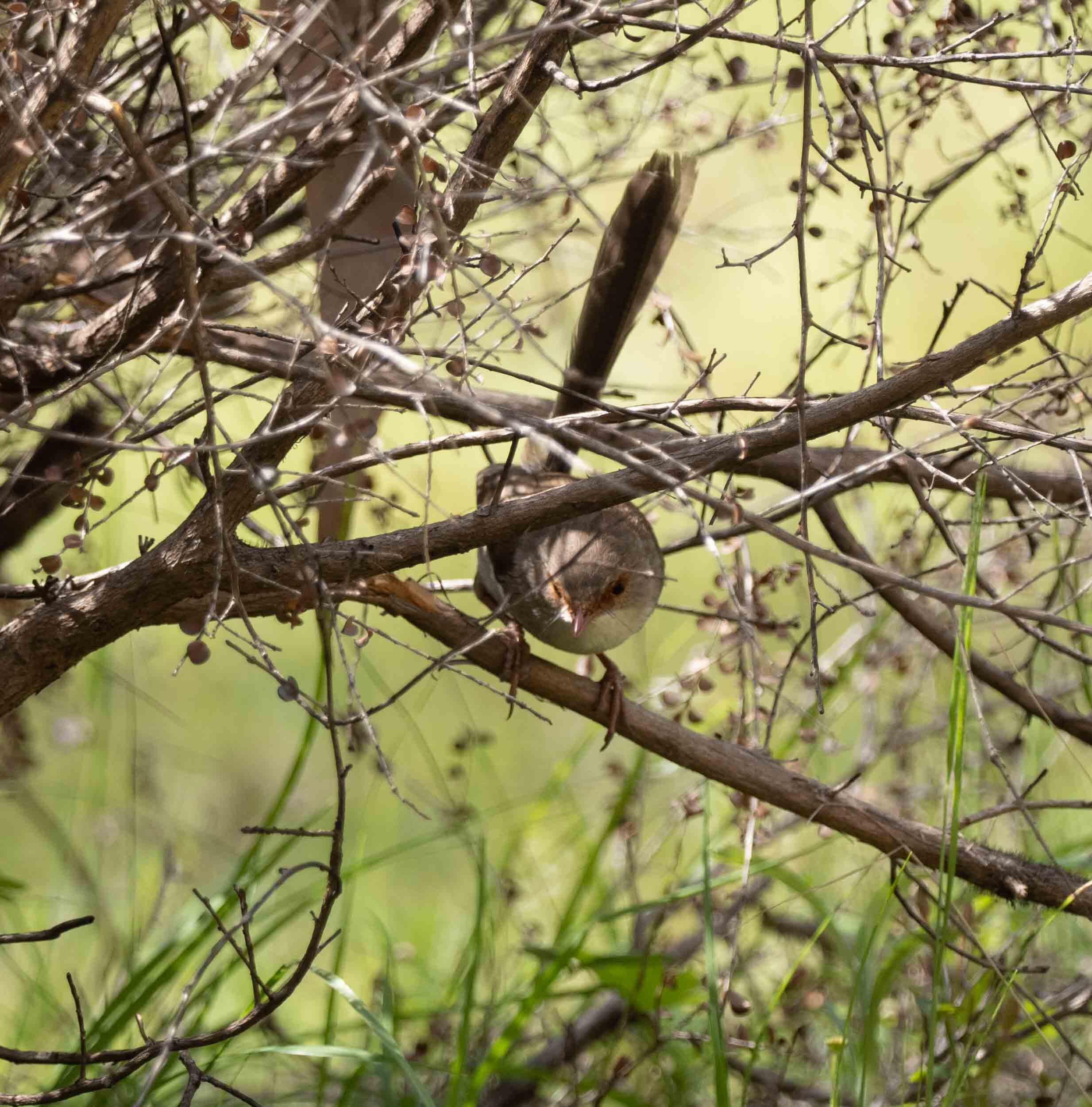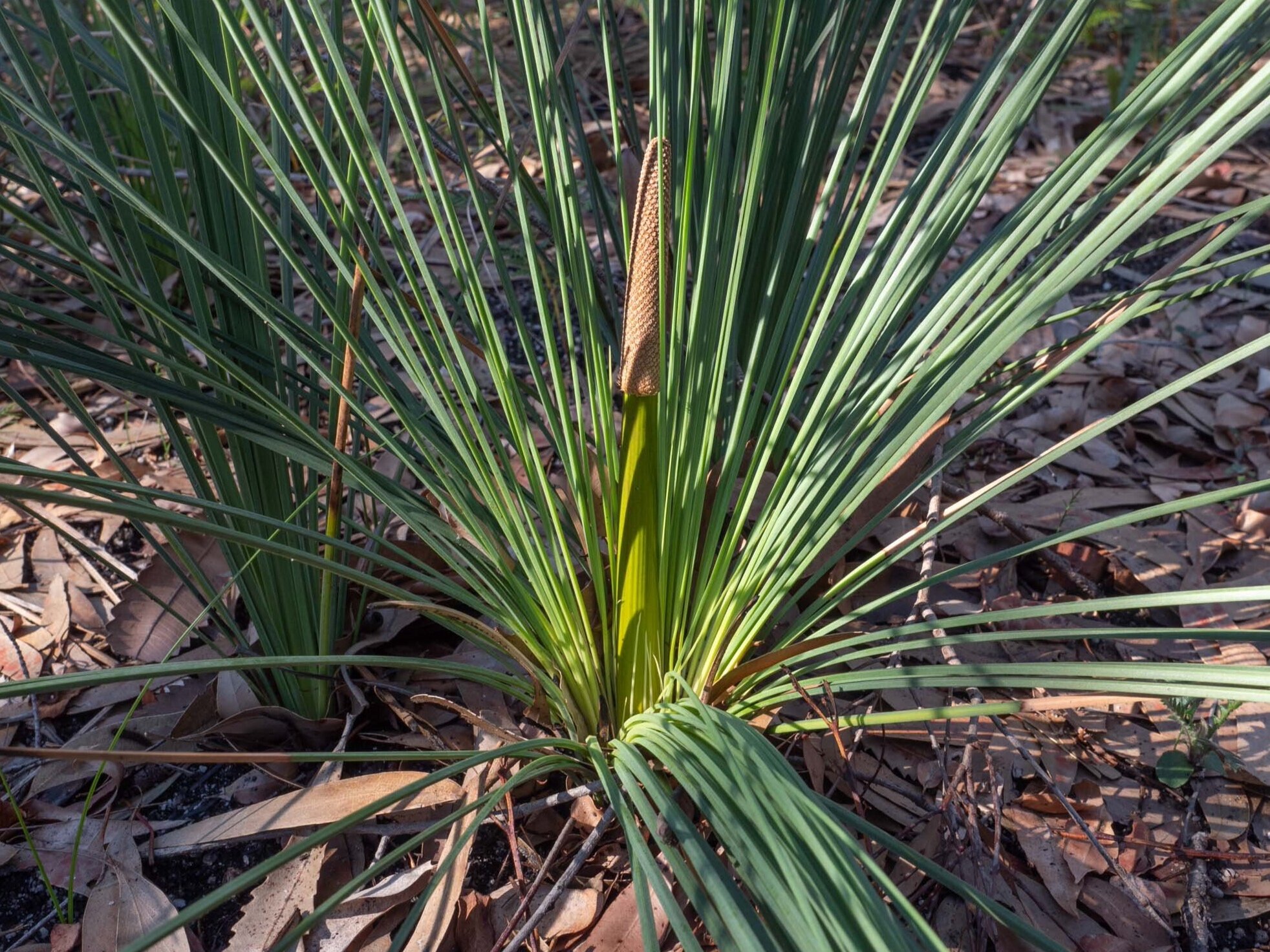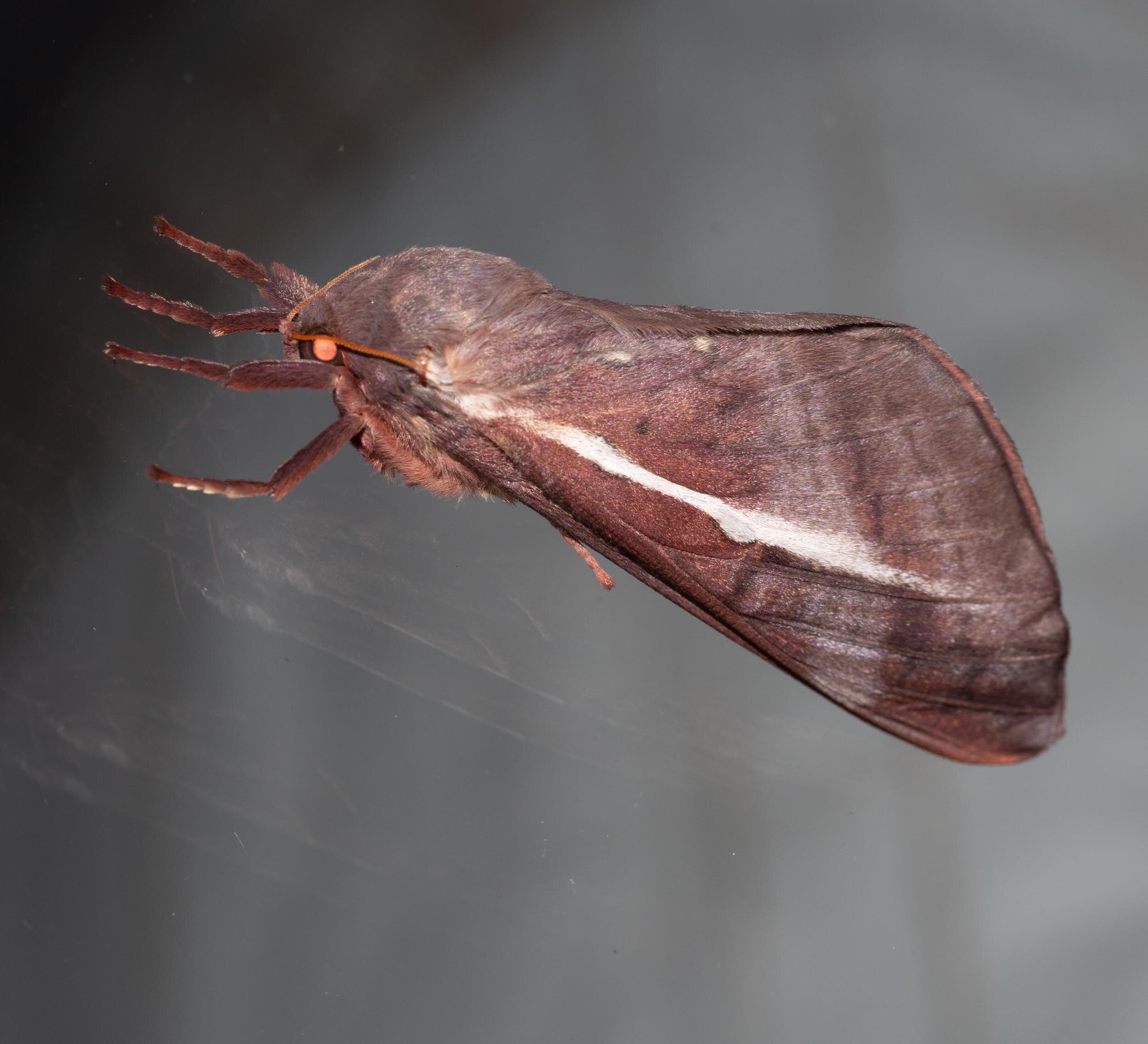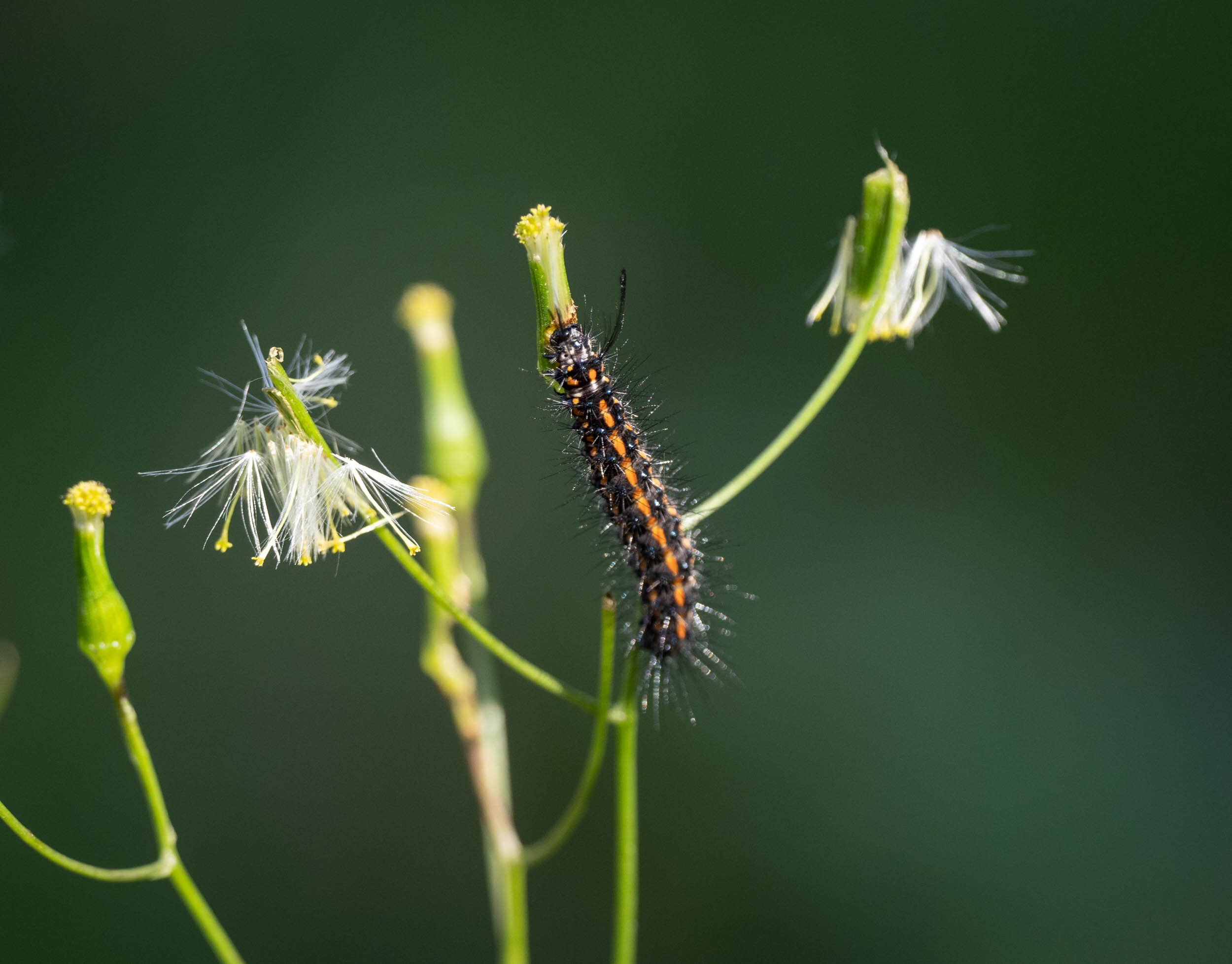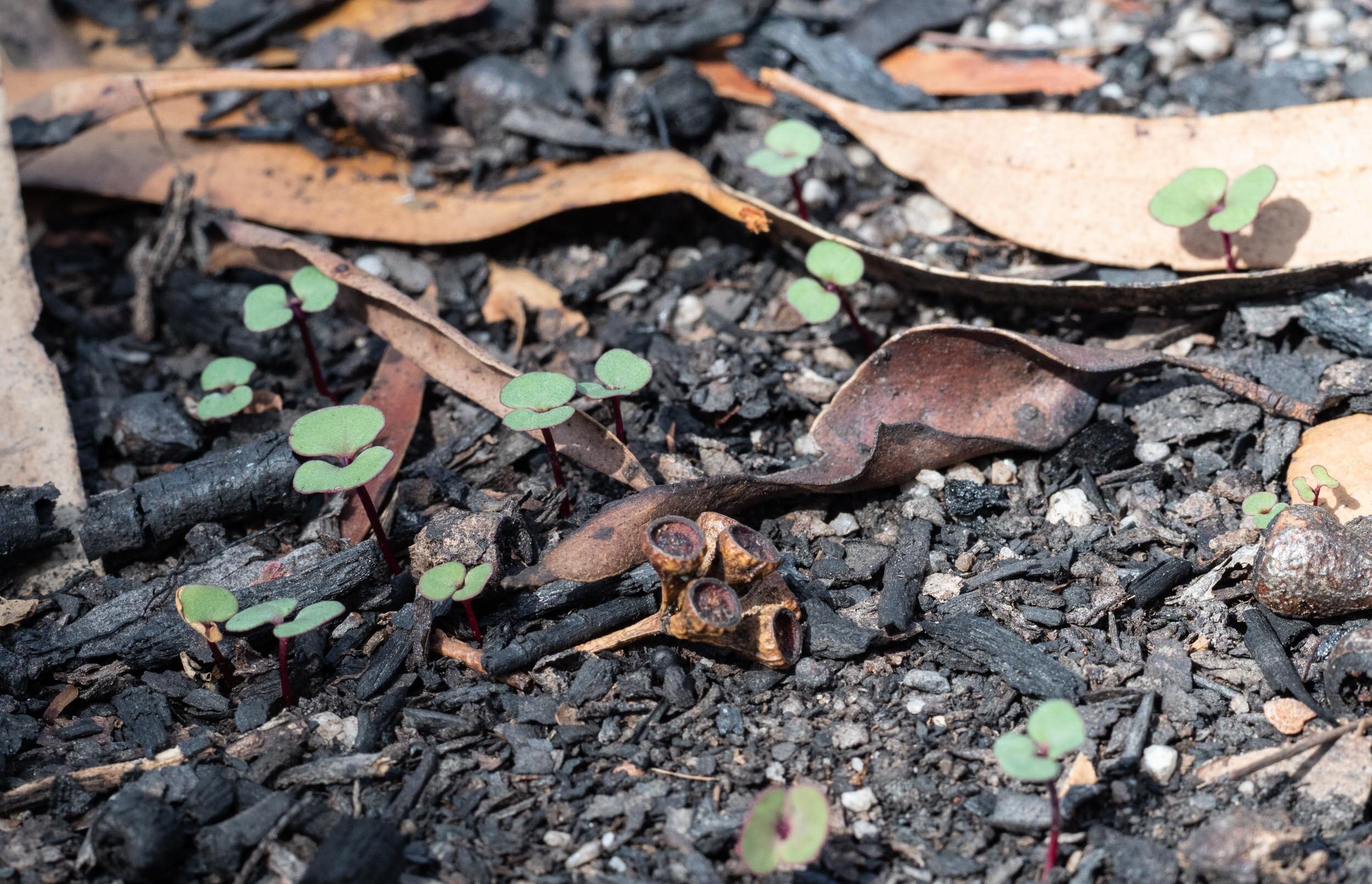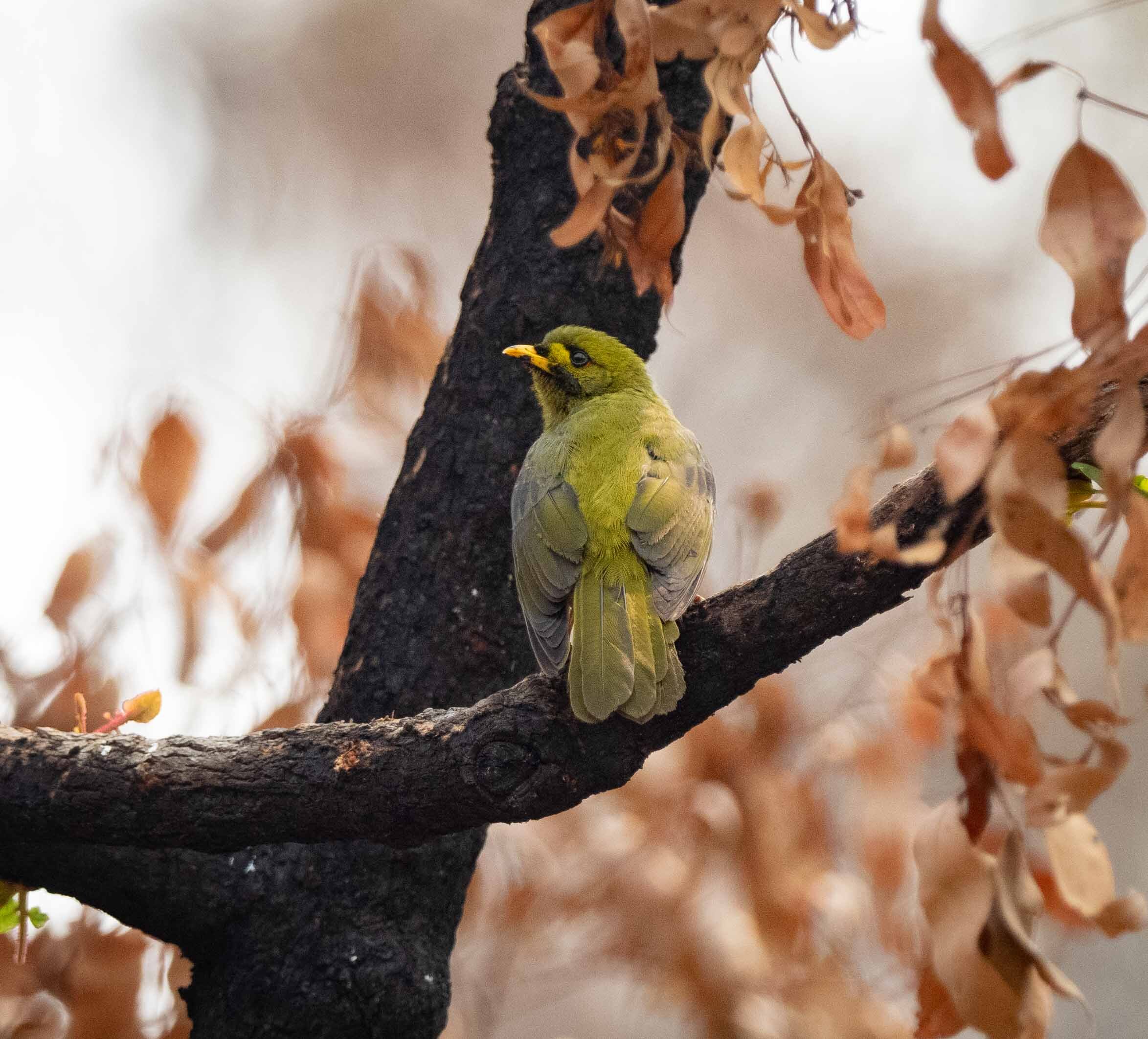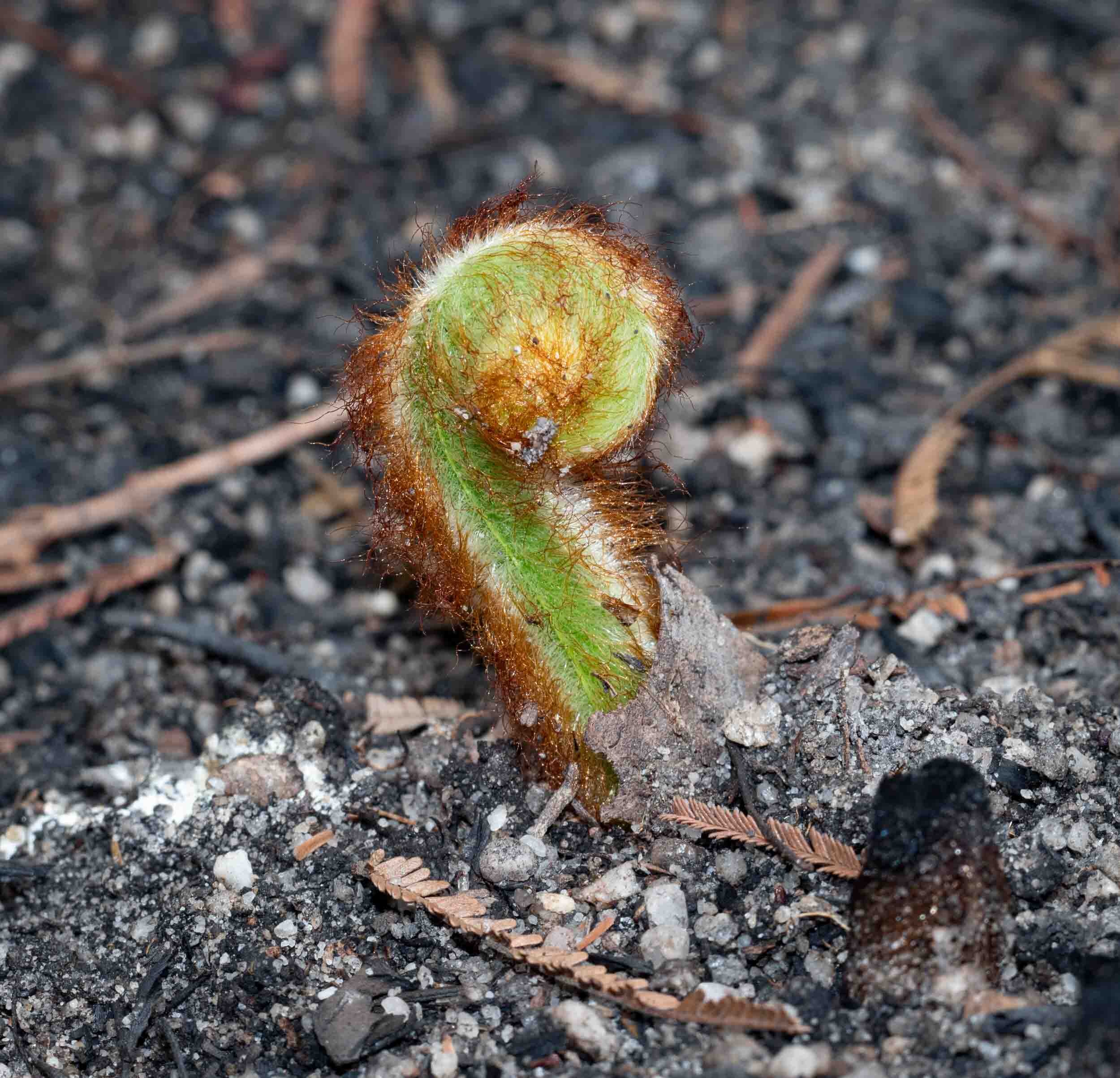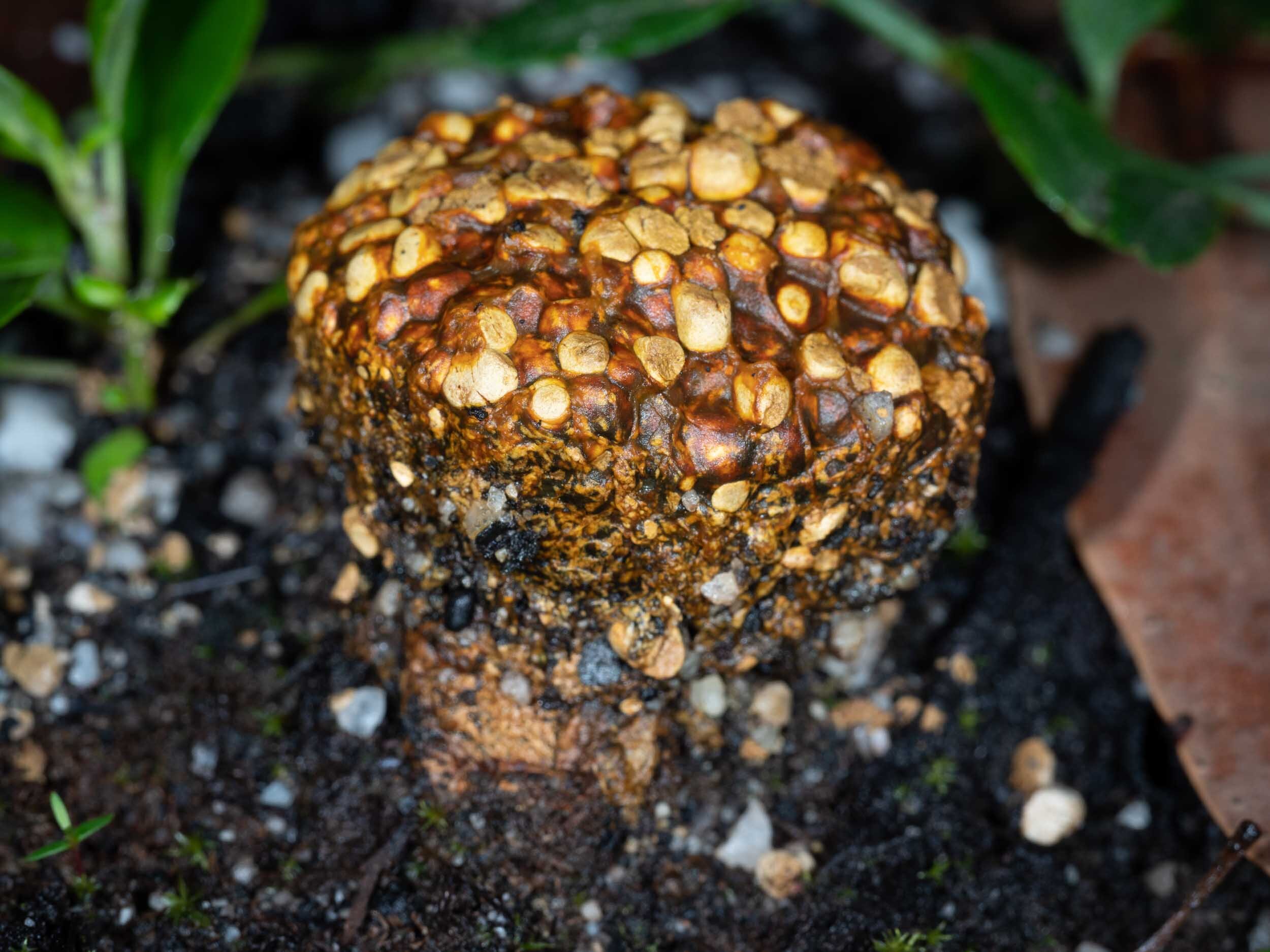
Below ground, the forest is species-rich and thriving. A myriad of insects and other invertebrates, fungi and other microbes. It is a world largely hidden from view. So how can I be confident of the health of the soil ecosystem? The clues and signs are in plain sight.
There are bees.
Spring has barely begun and already I’ve seen several species of native bees feeding at flowers. And it’s likely that most have emerged from underground burrows.
Ground-nesting bees live a self-contained life in their burrows. They have an enclosed cell, stocked with pollen-based food, and it’s there that they undergo their complete larval development. They feed, grow, moult and finally metamorphose into winged adults. So in some ways they live separate from rest of the soil community. Nature’s version of social isolation.
I’m still working on species ID, so I can’t be absolutely sure these are all ground-nesters …. but it seems likely many of them are. The majority of species in the two largest bee families (Colletidae and Halictidae) nest in burrows, in the soil.
There are beetles.
A crazy mating swarm reminded me of the soil-living scarab larvae. Many beetles spent most of their lives as grubs, underground. These ones were probably underground vegetarians, feeding on plant roots.
My tentative ID is family Melolonthinae – chafers. Perhaps genus Liparetrus. Perhaps.
There are flower wasps.
Flower wasps have become a common sight. Single flying males, flightless females and mated pairs.
Larvae feed on paralysed beetle larvae, underground. They are carnivores but not hunters. It’s the adult females that do the hunting, searching out beetle grubs, paralysing them, and laying an egg on each.
Recently I noticed something struggling in the leaf litter. It was a rather large and hairy wasp, trapped with its head in the noose of a dead leaf. In chewing its way out of its underground home it had apparently chewed through a dead leaf … and become stuck. We picked up the leaf, took a few shots … and the wasp then pulled its head free and took off.
There are stiletto flies.
These flies provide an even better case for soil biodiversity. As larvae, they are highly active predators, hunting out insect larvae such as beetle grubs, fly larvae and moth caterpillars.
The adults recently emerged in large numbers. On warm afternoons, males are congregating, circling in flight about a metre above the ground. They occasionally rest on low vegetation – making photography much simpler.
Through iNaturalist we’ve recently made contact with an expert on stiletto flies (Therevidae). Dr Christine Lambkin is an entomology curator with the Queensland Museum. Thanks to Chris, I’m learning more about this family of flies – and we may soon have an accurate species-level ID for our local flies.
There are orchids.
Orchid seeds only germinate and grow with the aid of a suitable fungus, a mycorrhizal partner. And we are seeing many, many orchids! This month it’s the Pink Fingers (Caladenia carnea) … and there are literally hundreds of flowers, spread widely across the forest floor.
Fire is known to stimulate the flowering of many orchid species, so that is part of the explanation. Some of the flowers will be growing from underground tubers rather than seeds. But with so many flowers, I reckon we must be seeing the results of mass seed germination. Which means that the appropriate mycorrhizal fungi are in the soil, doing their bit too.
There are ‘dung ball’ fungi.
A mushroom is just the reproductive part of a fungus. Like the flower of a plant. It is usually the most obvious part and the best clue to species identity, but it represents only a small part of the ecological story.
The characteristic Pisolithus fungus has been popping up across the forest floor for months now. Pisolithus is a mycorrhizal partner of many forest trees, including eucalypts and wattles. It is so important to tree health that nurseries purposely inoculate seedlings with Pisolithus culture.



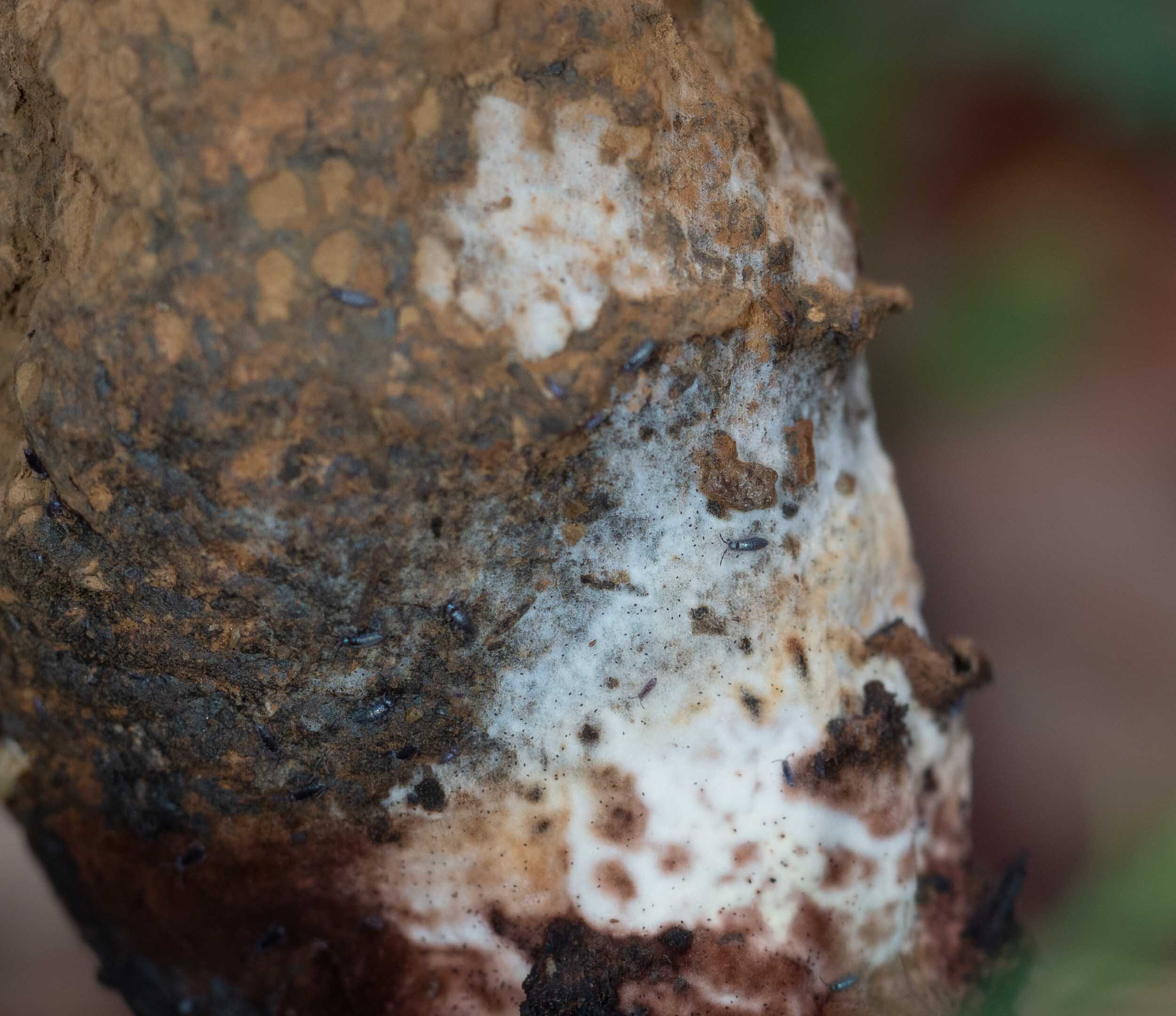
OK, they are not the most beautiful of fungi but I’m very happy to see them. It means they’re out there, in the soil, supporting the recovering trees. And just as importantly, they’re reproducing! The spores released from these ugly little blobs will ensure that the hundreds of tiny eucalypt and wattle seedlings will have no trouble finding partners of their own.
There are saprophytic fungi too.
Many of the fungi we see are saprophytic. That is, they feed by breaking down dead organic matter such as wood and animal droppings. They release nutrients such as nitrogen back into the soil. Burnt and buried wood is being recycled, feeding growing plants. And the fungi themselves are food for a variety of animals, below ground and above.
Note: The fungi above emerged from the soil, post fire. I’ve yet to ID them all – it’s a work-in-progress – but I do know that many of them are indeed saprophytic.
After the fire, we worried about the effect on the soil. Would the chemical balance be all wrong? Would there be a loss of key nutrients? And what about the biota? The early plant growth gave us hope. The mushrooms provided further encouragement. And now that so many insects are emerging, ready to breed, we are confident that all will be well. The forest will continue to rebuild. It is already off to a very good start.
Another year on since the fire, the forest has continued to recover. It now looks quite different to before the fire. Has it changed for good? Or will it return to its previous state?
Winter temperatures still, but the forest is clearly ready for the Spring transformation.
The forest has undergone an extraordinary renewal - which is ongoing - following the devastating bushfire in January 2020.
A summary of post-fire recovery of our forest moths - a good proxy for ecosystem health
Fairy-wrens are settling in to breed, taking advantage of spiky dead vegetation.
We anticipate an extraordinary display of Xanthorrhoea flowers this Summer. Fire promotes flowering of these iconic plants. In preparation, I’ve been seeking to learn more about our local species.
Ghost moth larvae took refuge deep in the soil as the fire swept through the forest, to emerge as adults 5 months later.
The strange looking foliage that has appeared on our eucalypt trees since the fire houses a wealth of creatures - an ecosystem in its own right.
Piece by piece our forest ecosystem is reassembling. Insects are populating the rapidly regrowing vegetation.
Three months on, the epicormic growth is astonishing. I seek to learn more, even as I marvel at a sight I may not see again for many years. Indeed, I rather hope not to.
As the plants regrow the insects return. Many are species we know but there are new ones too. Importantly the makings of the next generation are also underway.
With each animal that appears, it’s intriguing to consider where it was when the fire swept through.
A forest begins the slow process of regrowth following an intense bushfire.
One month since The Fire and our home bird list is growing. Some of our regular forest birds are returning, but there are some unusual visitors too. We’re hoping they don’t all stay!
Seeds germinating, ferns fronds unfurling, tree trunks shooting, insects emerging, birds visiting. The recovery has begun.
Around 2am on 5th January 2020 our forest was engulfed by fire. Just 4 of the more than 5 million hectares burned in NSW this season, but it’s the 4 hectares we know and love.

